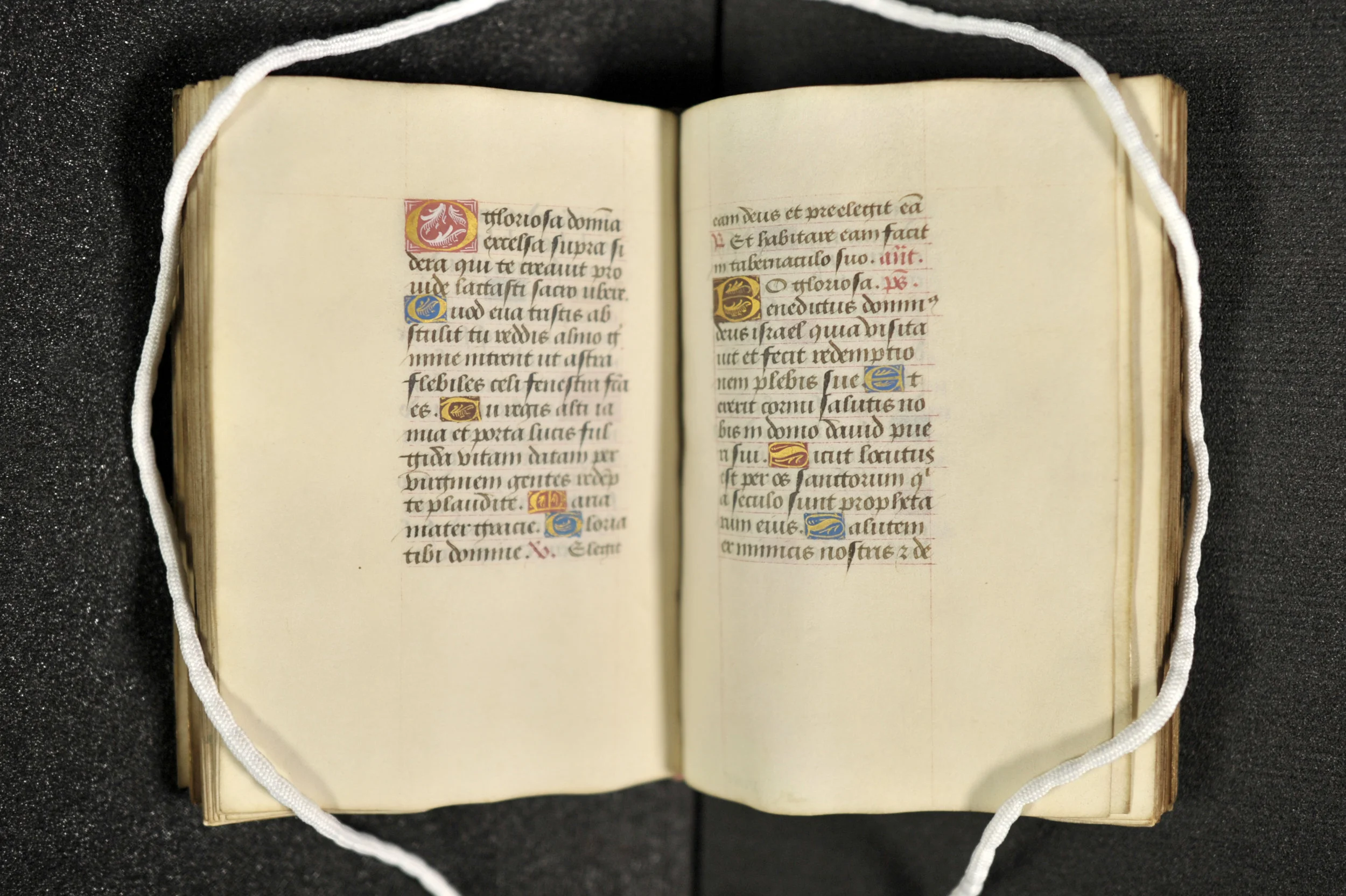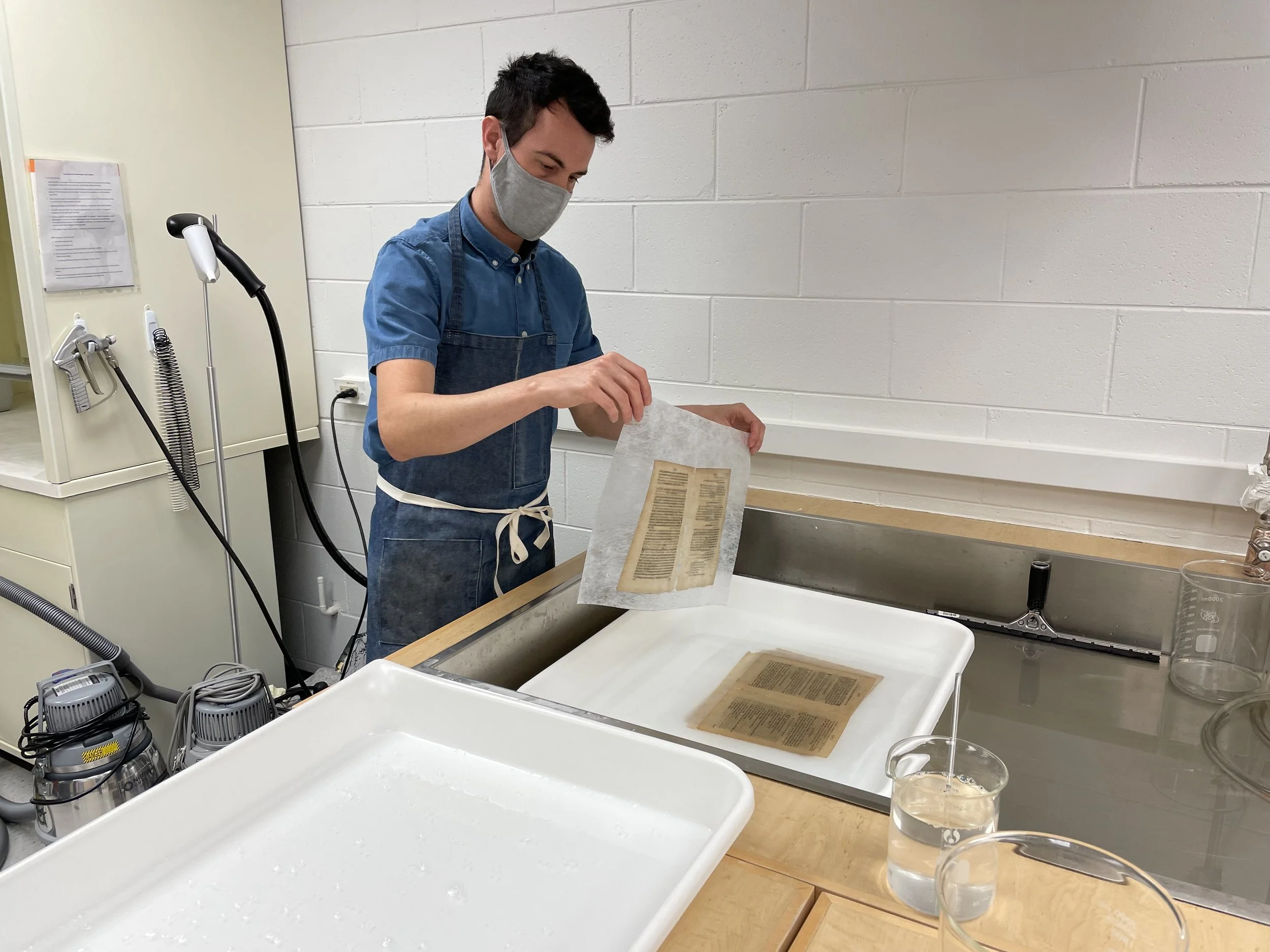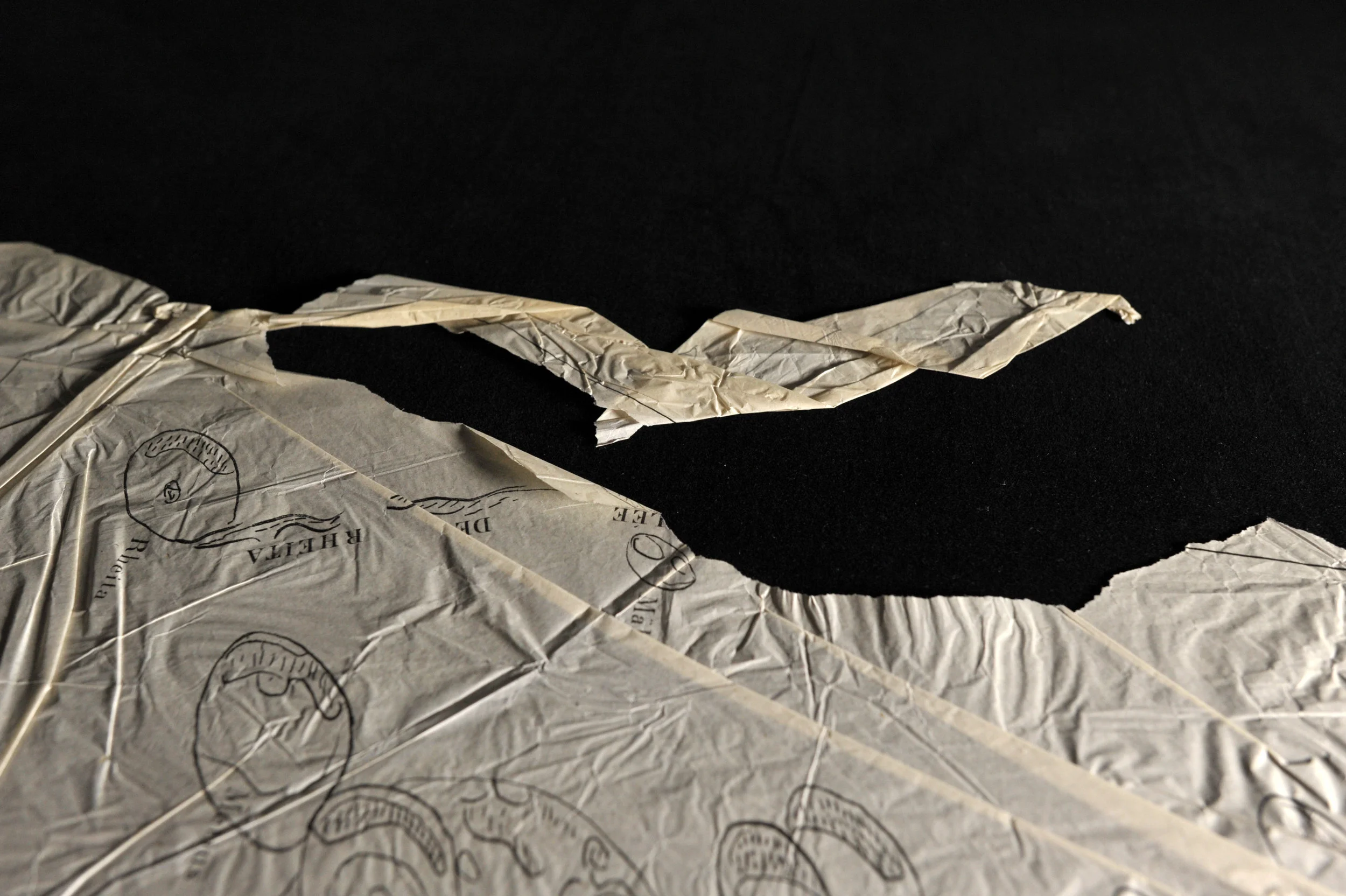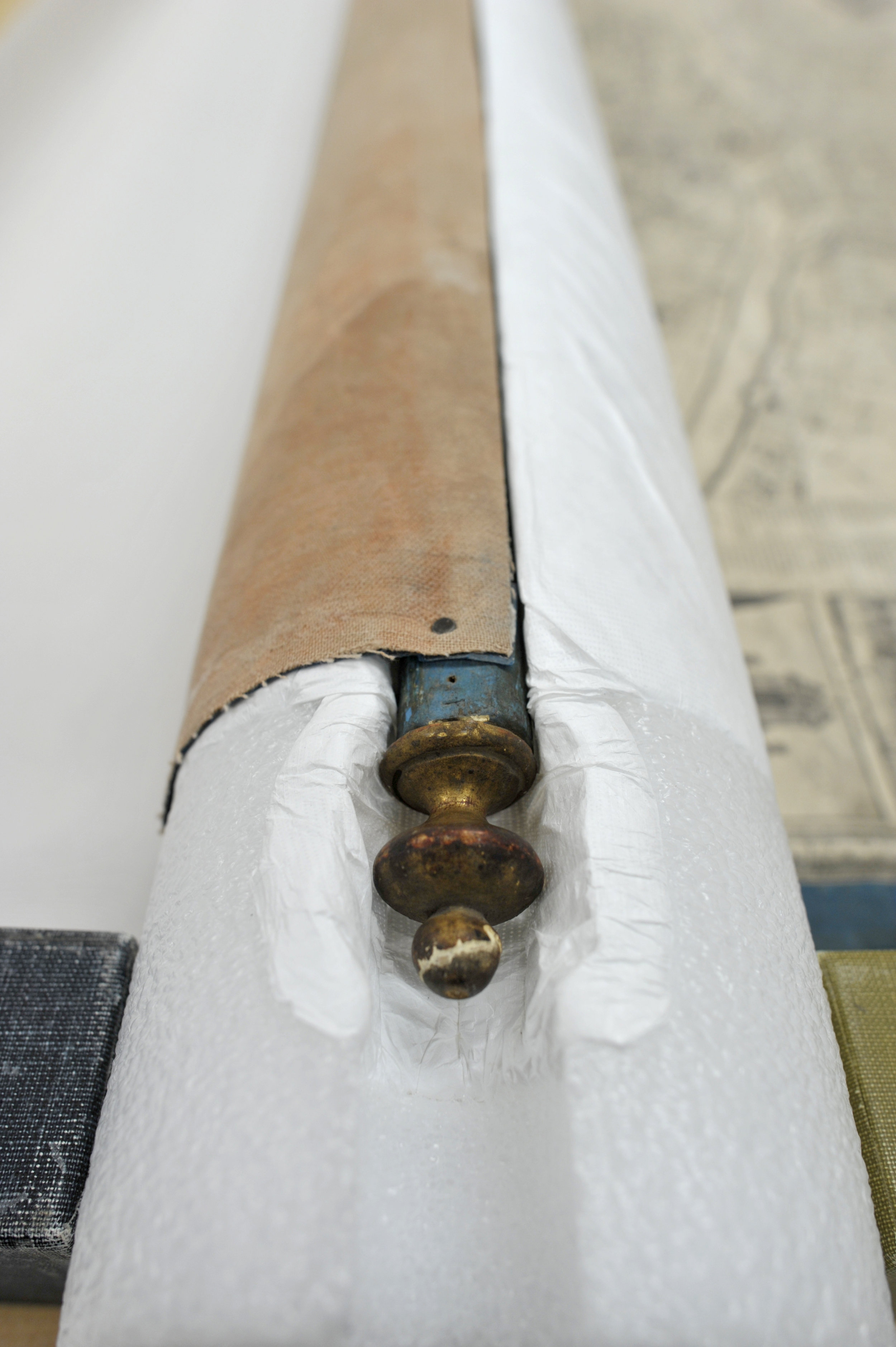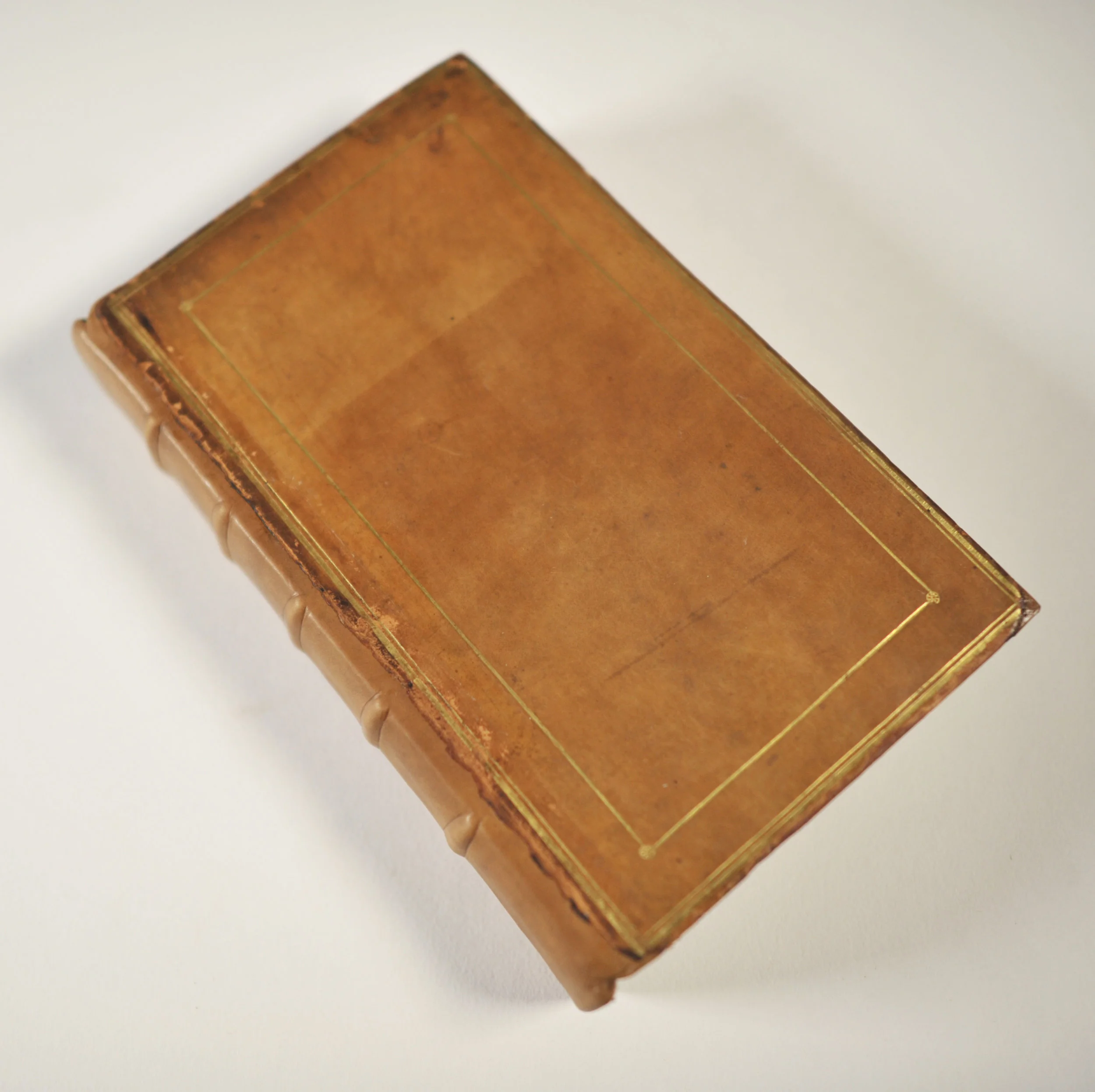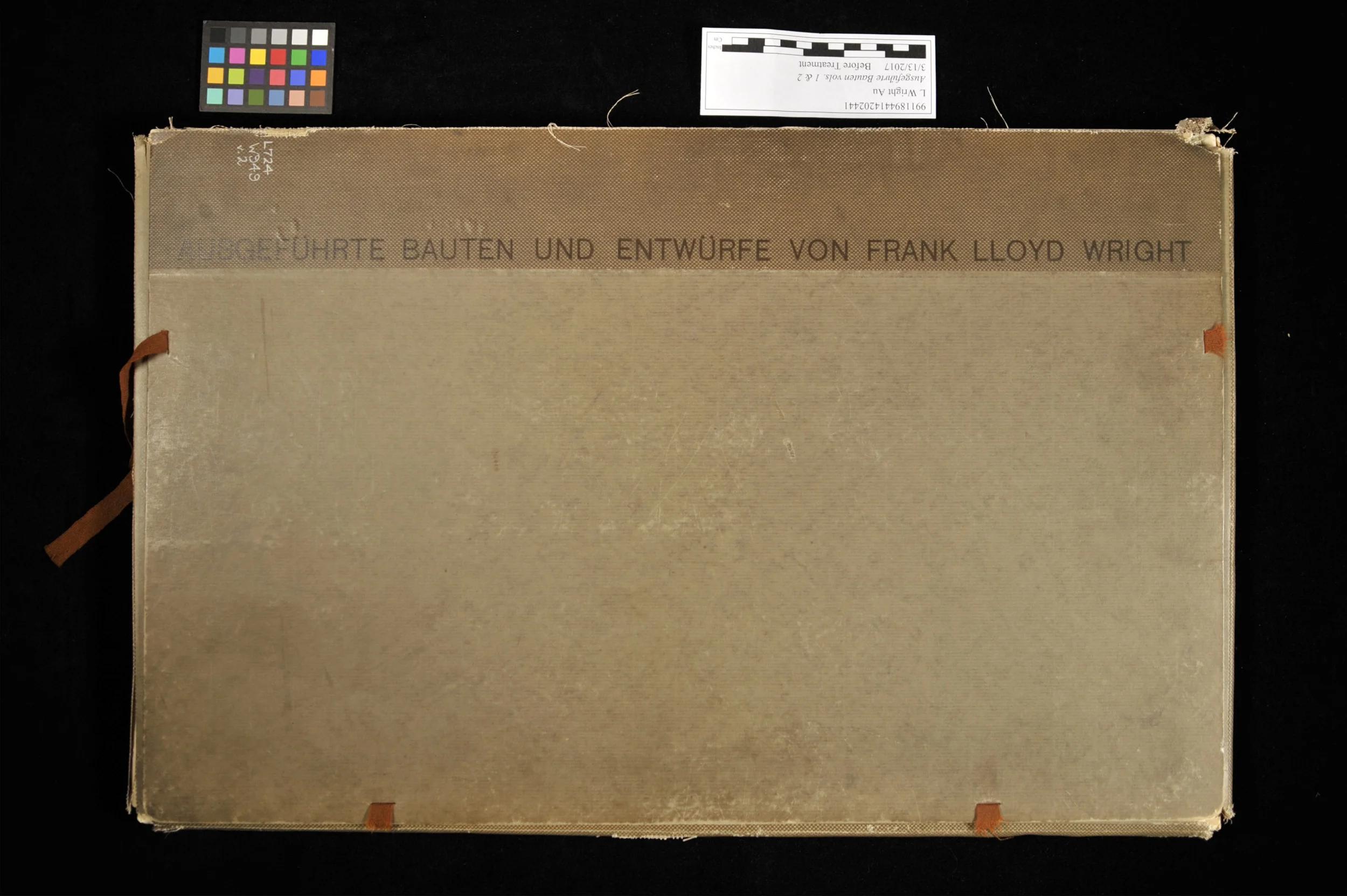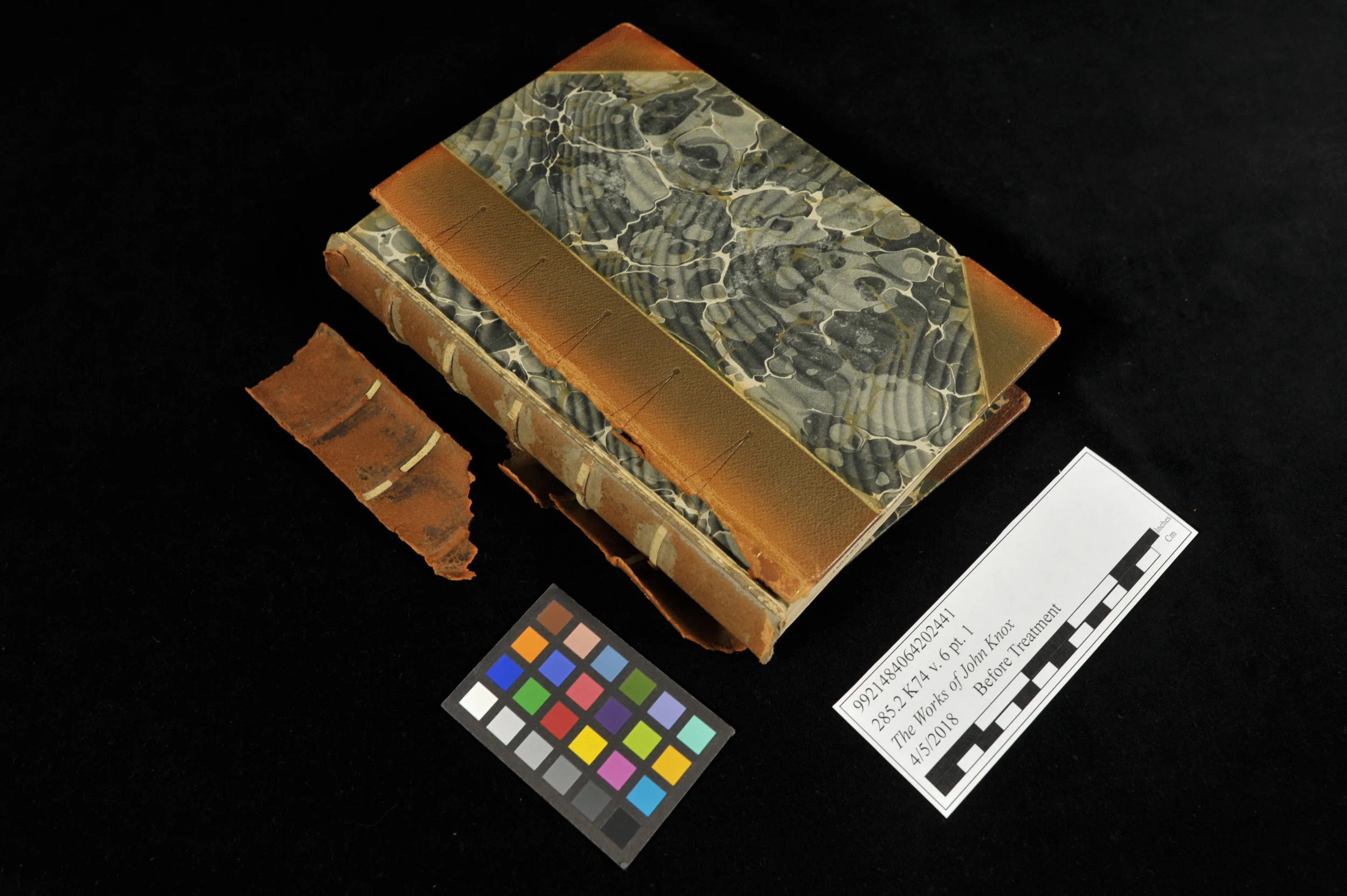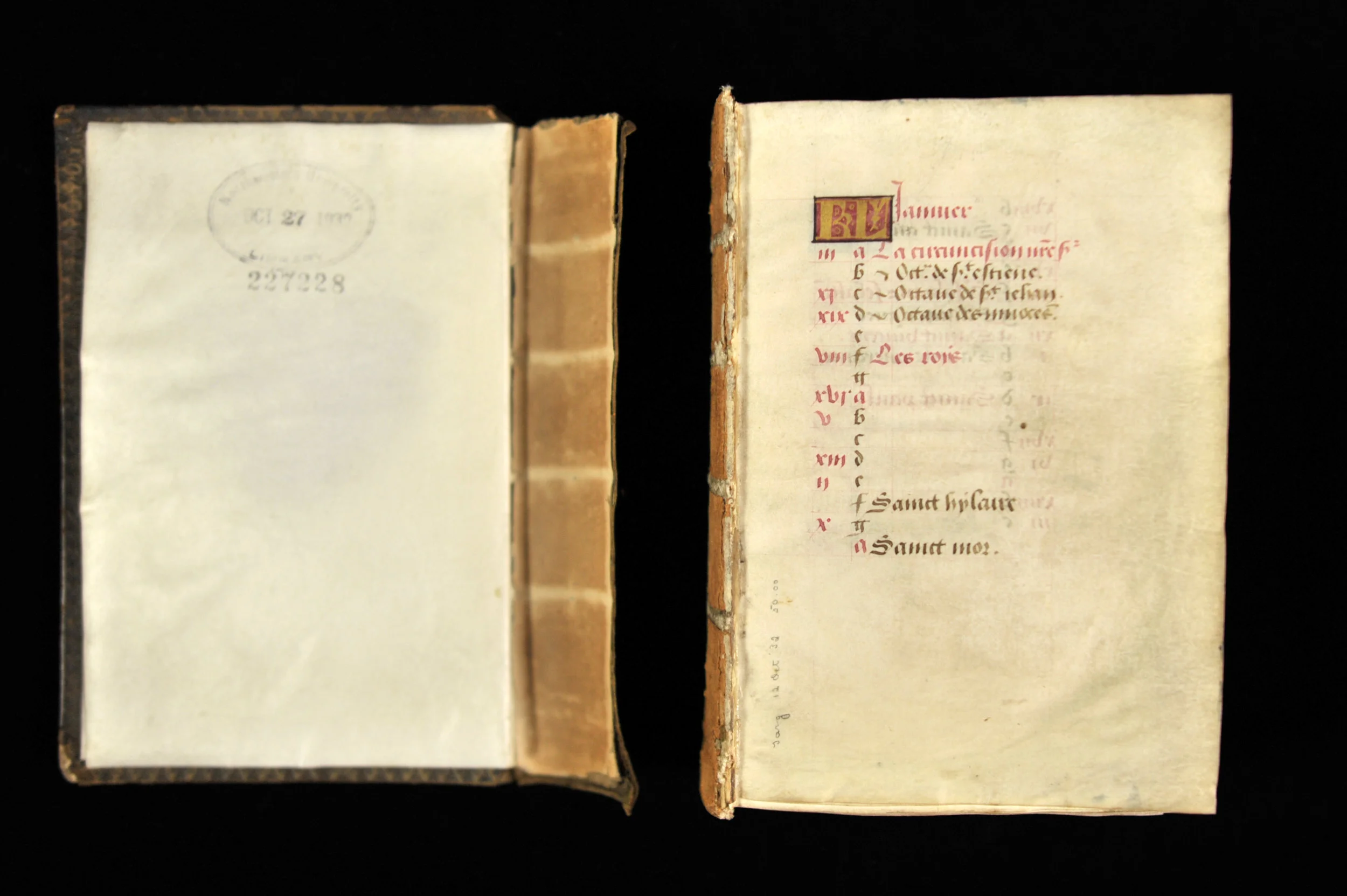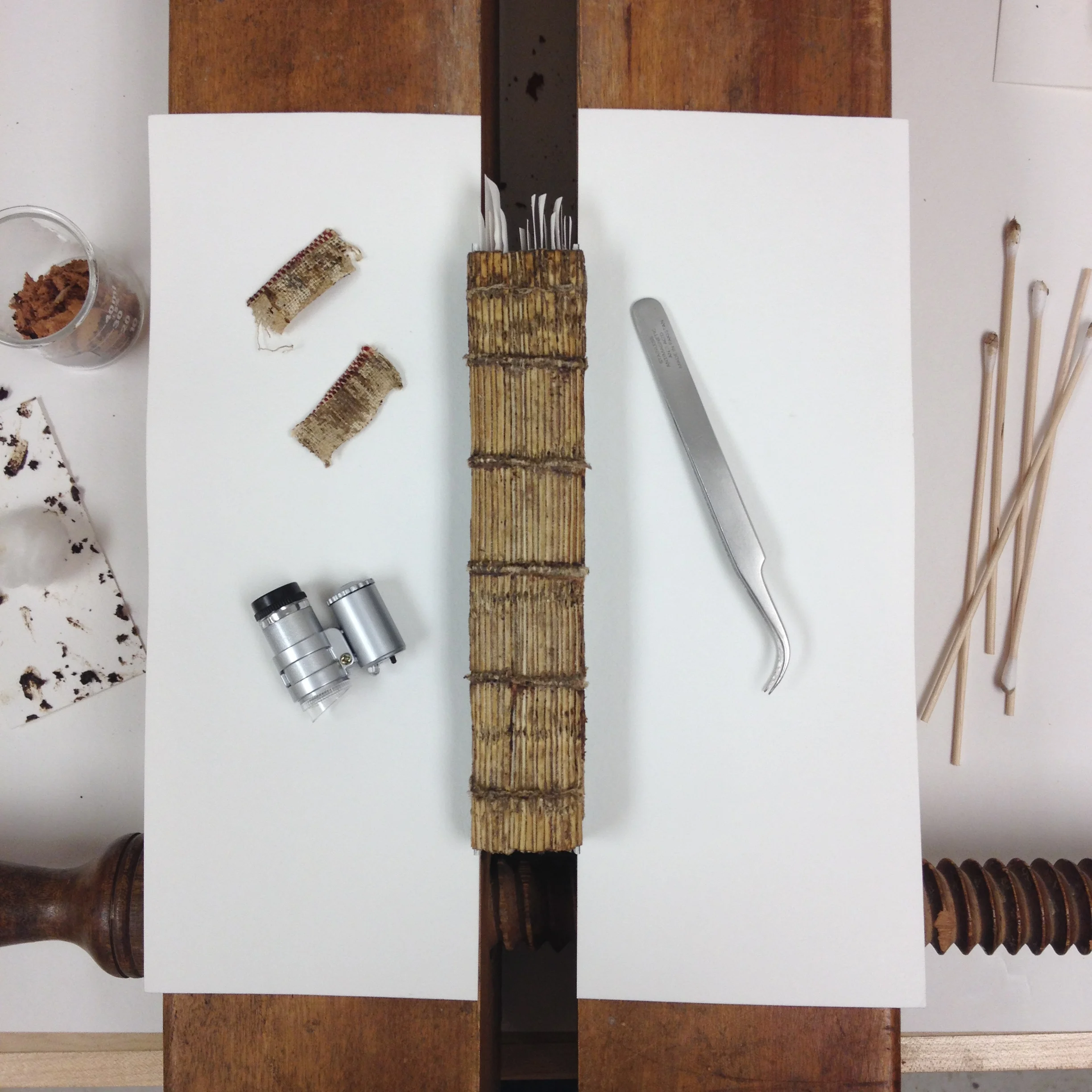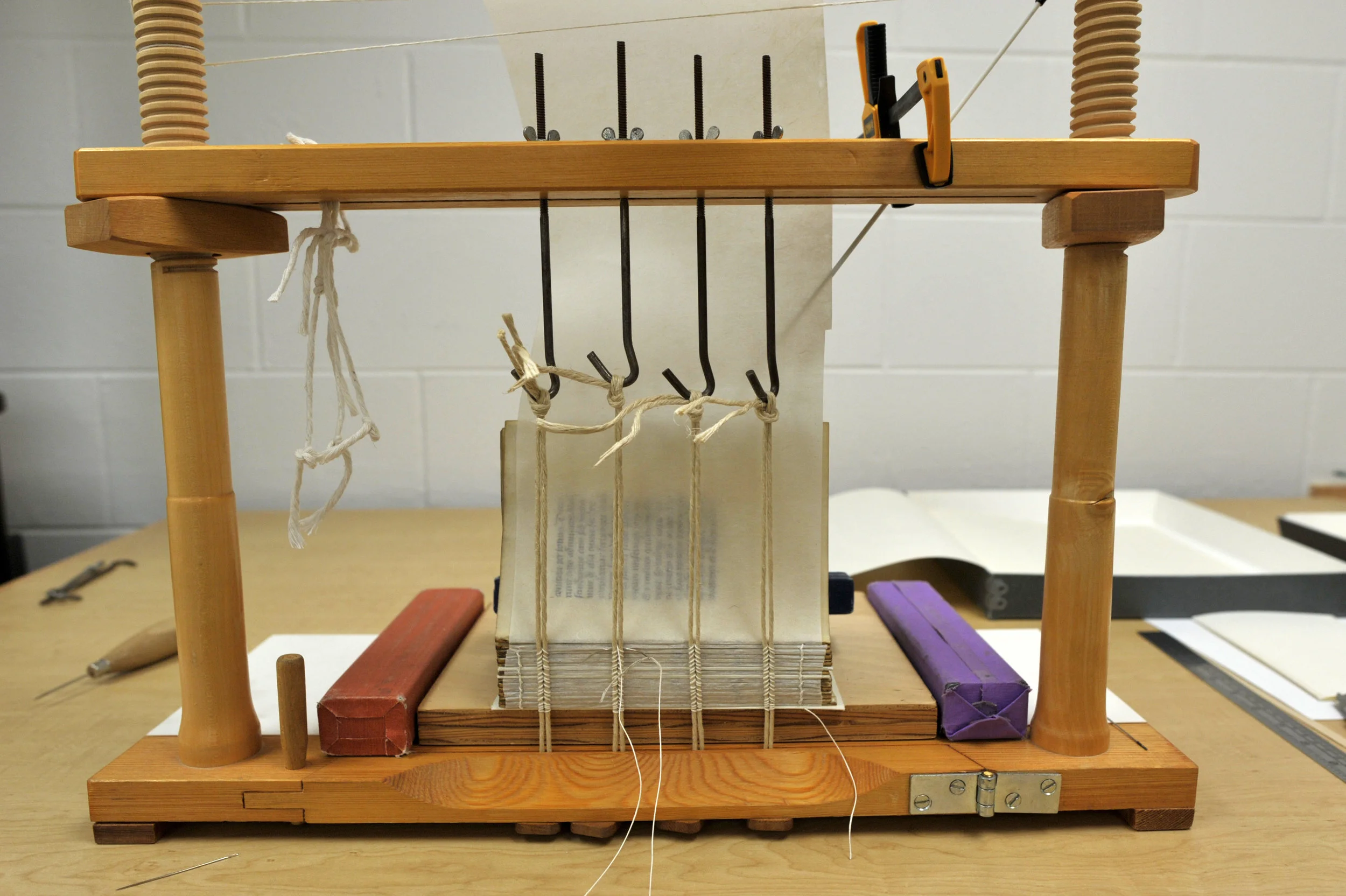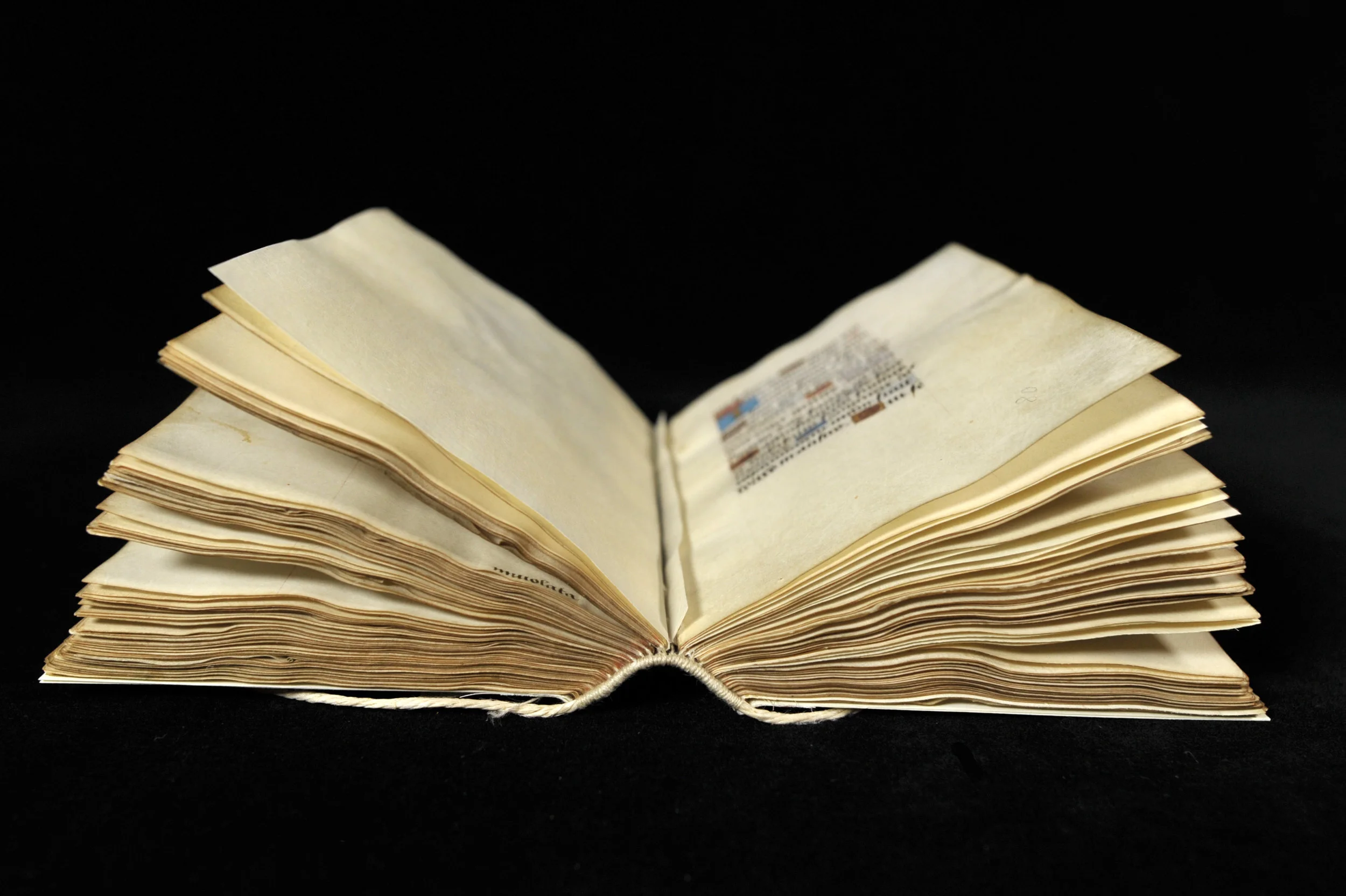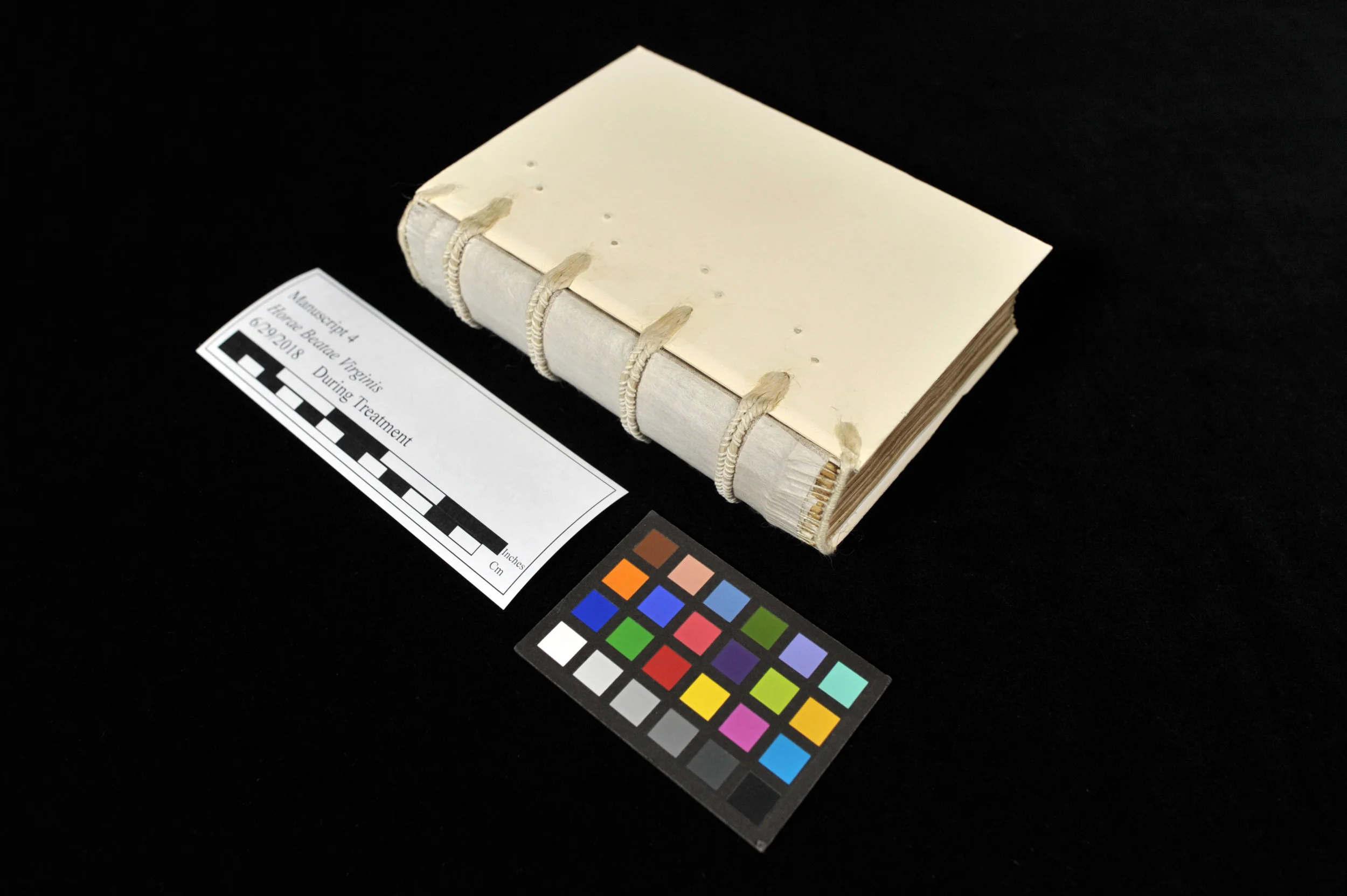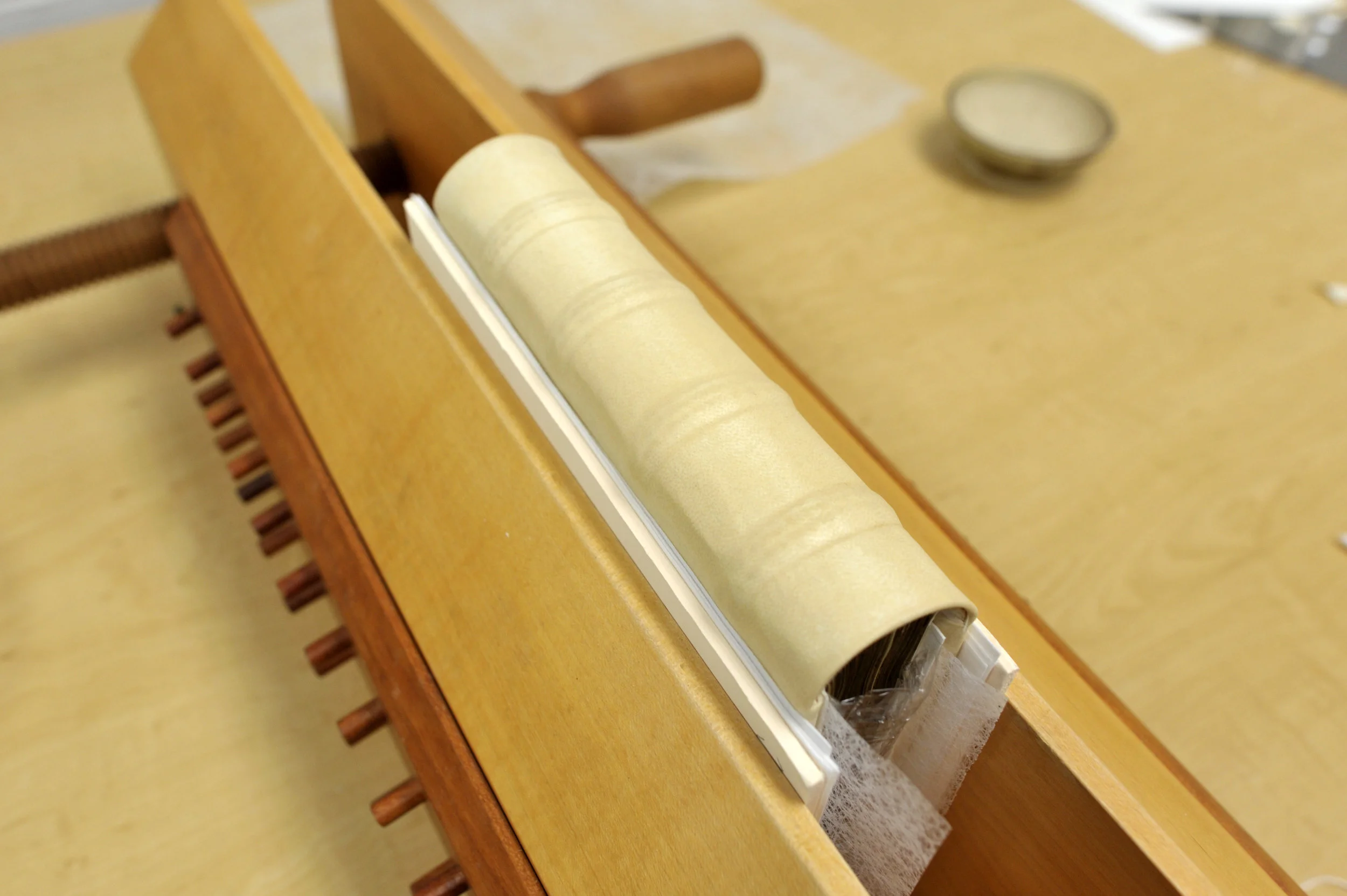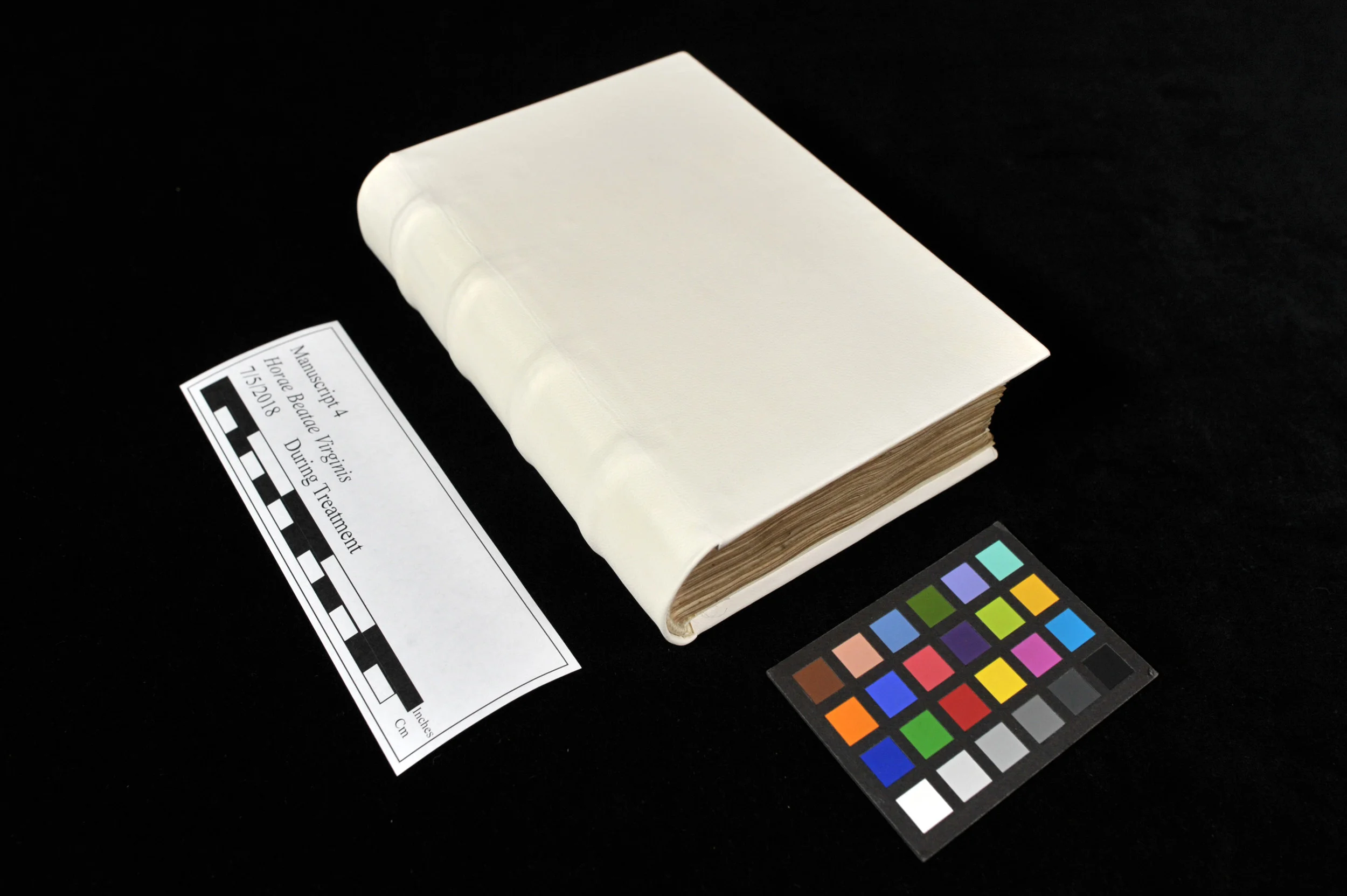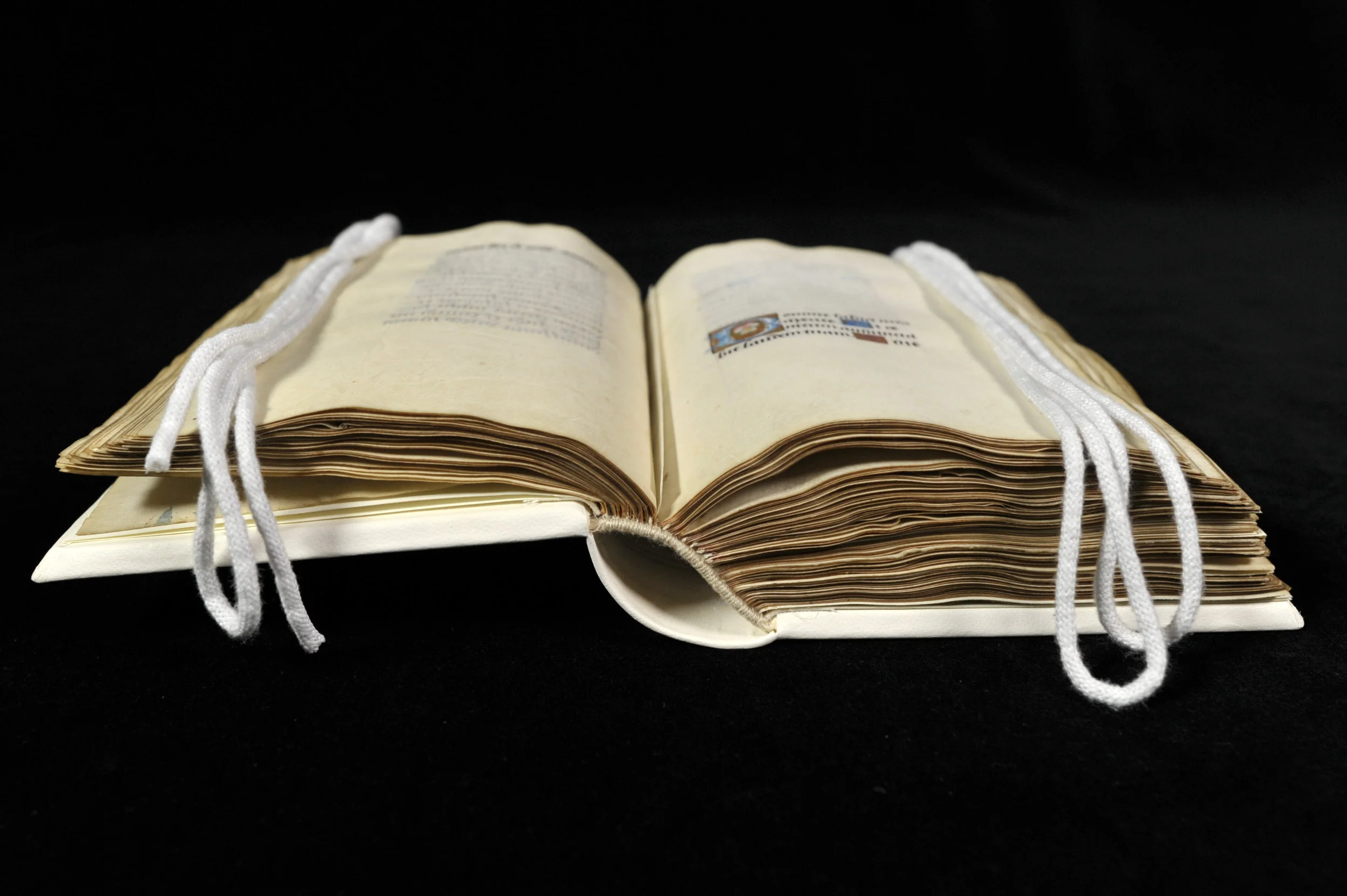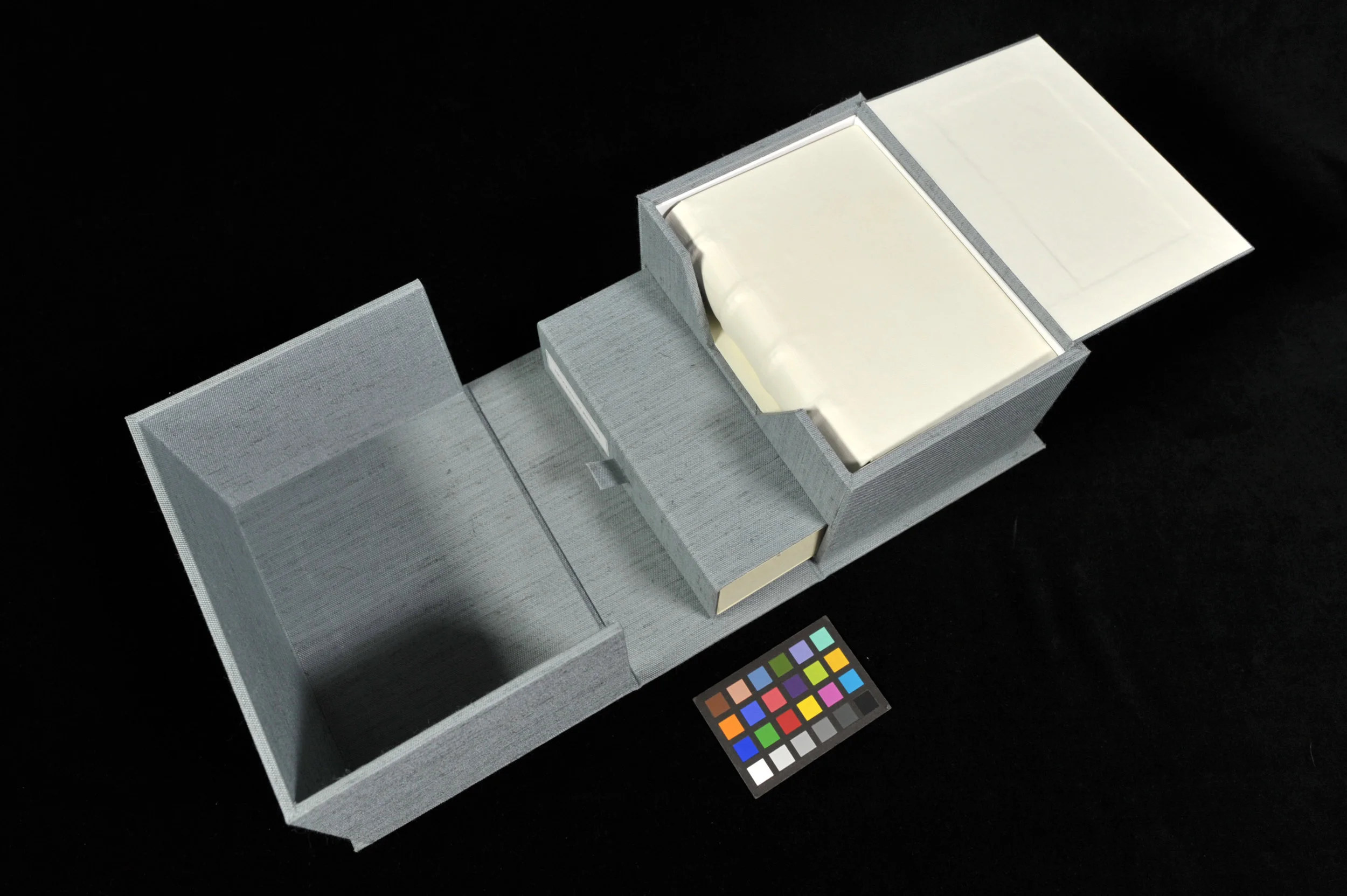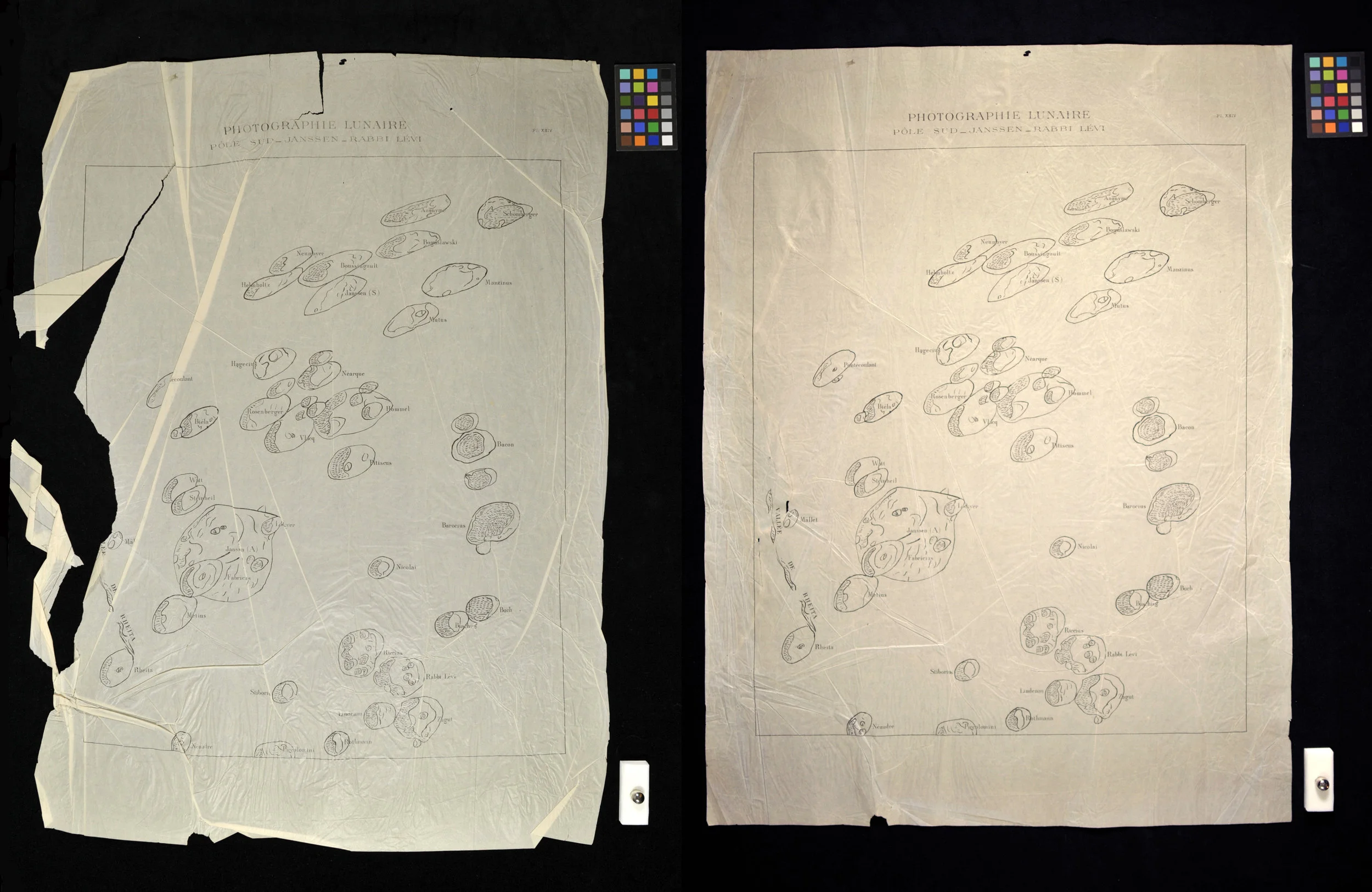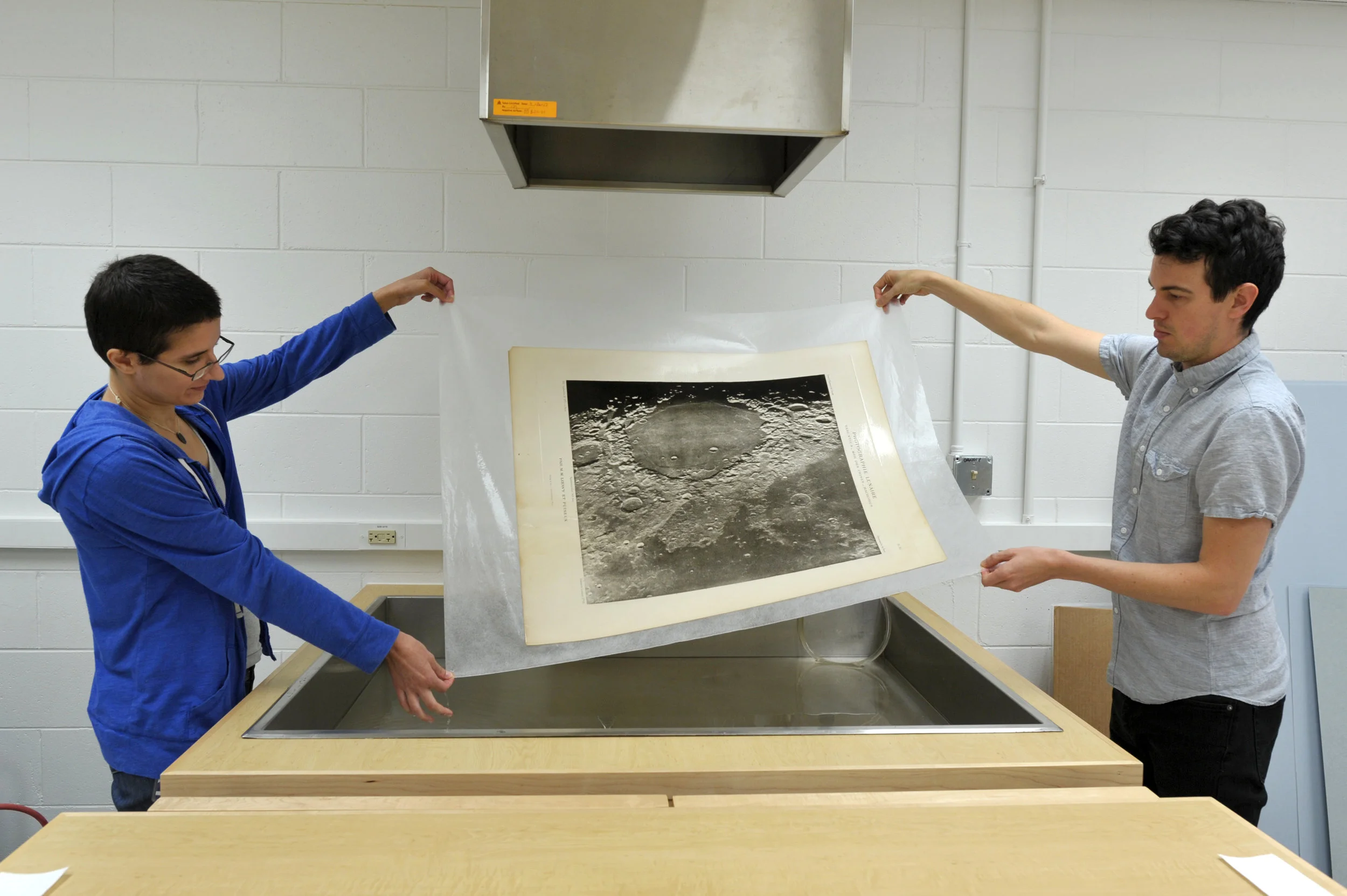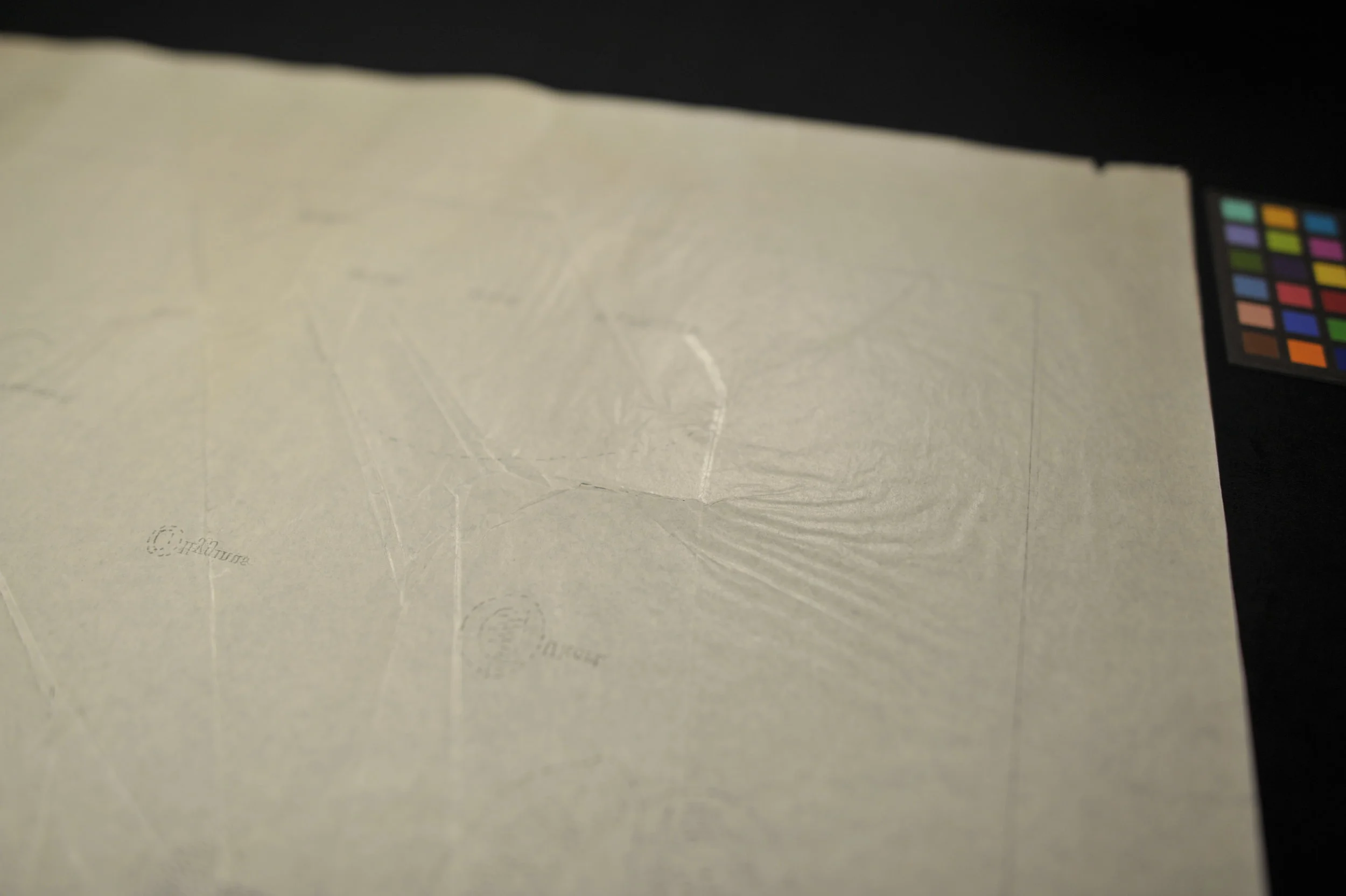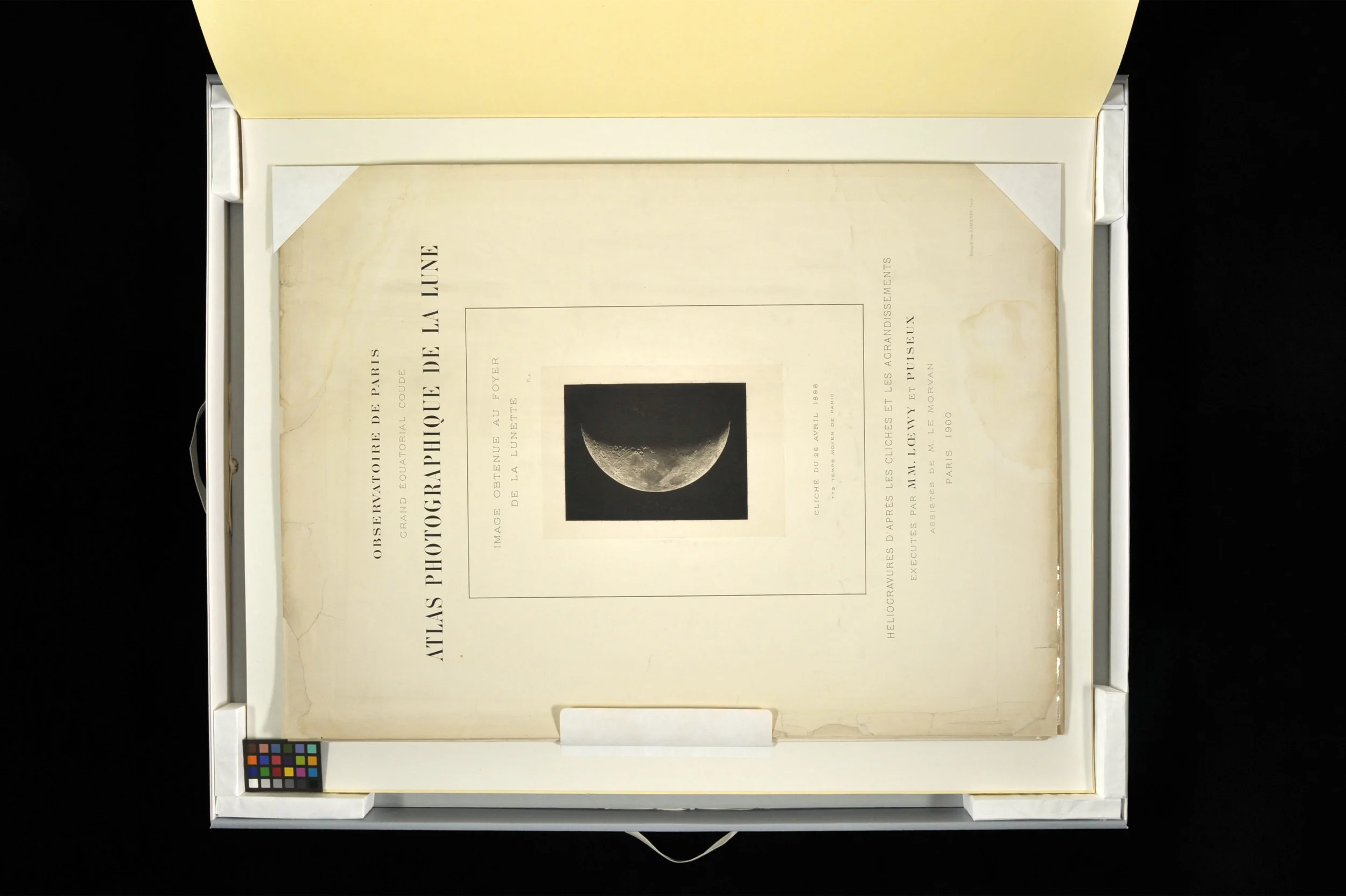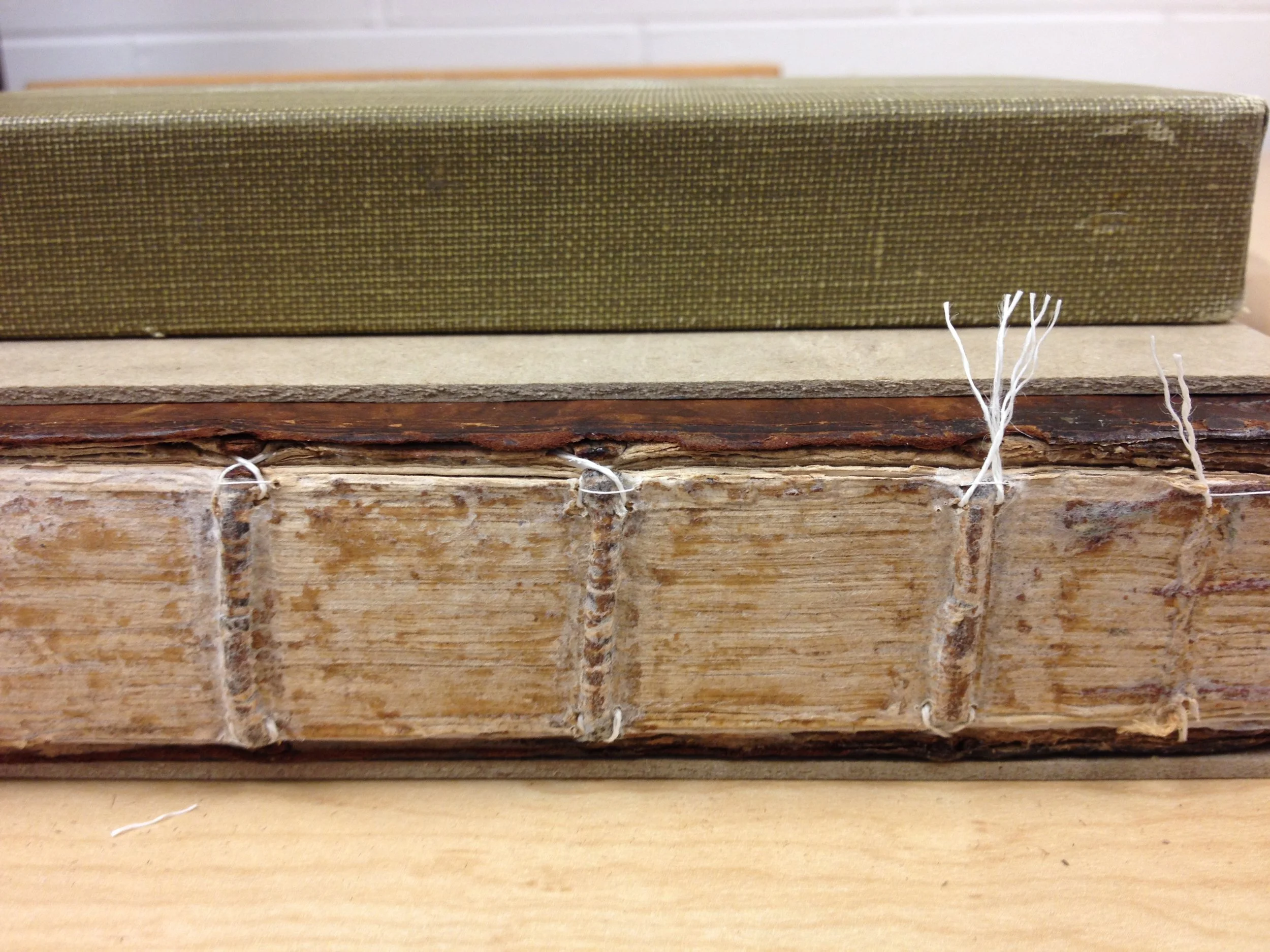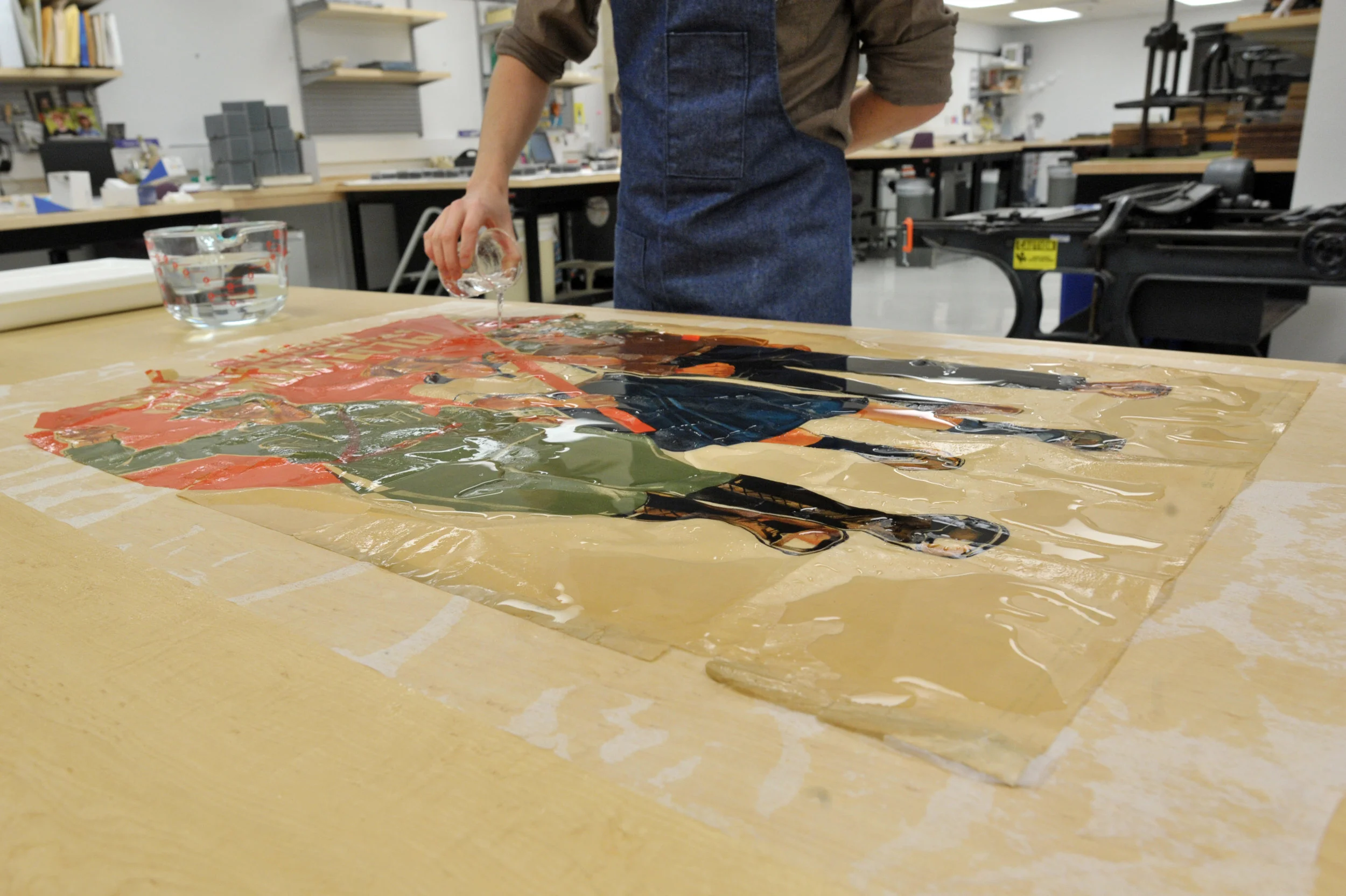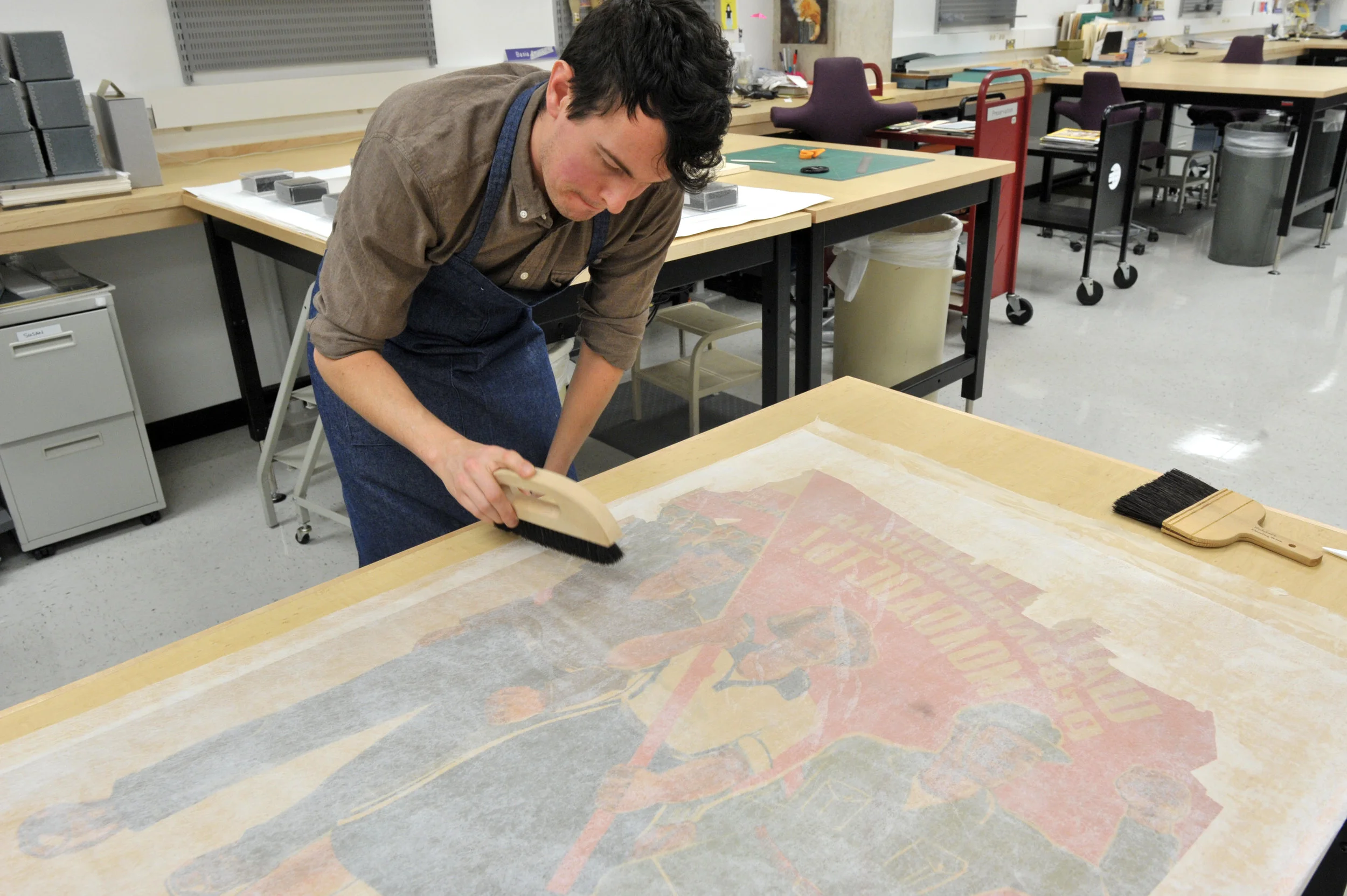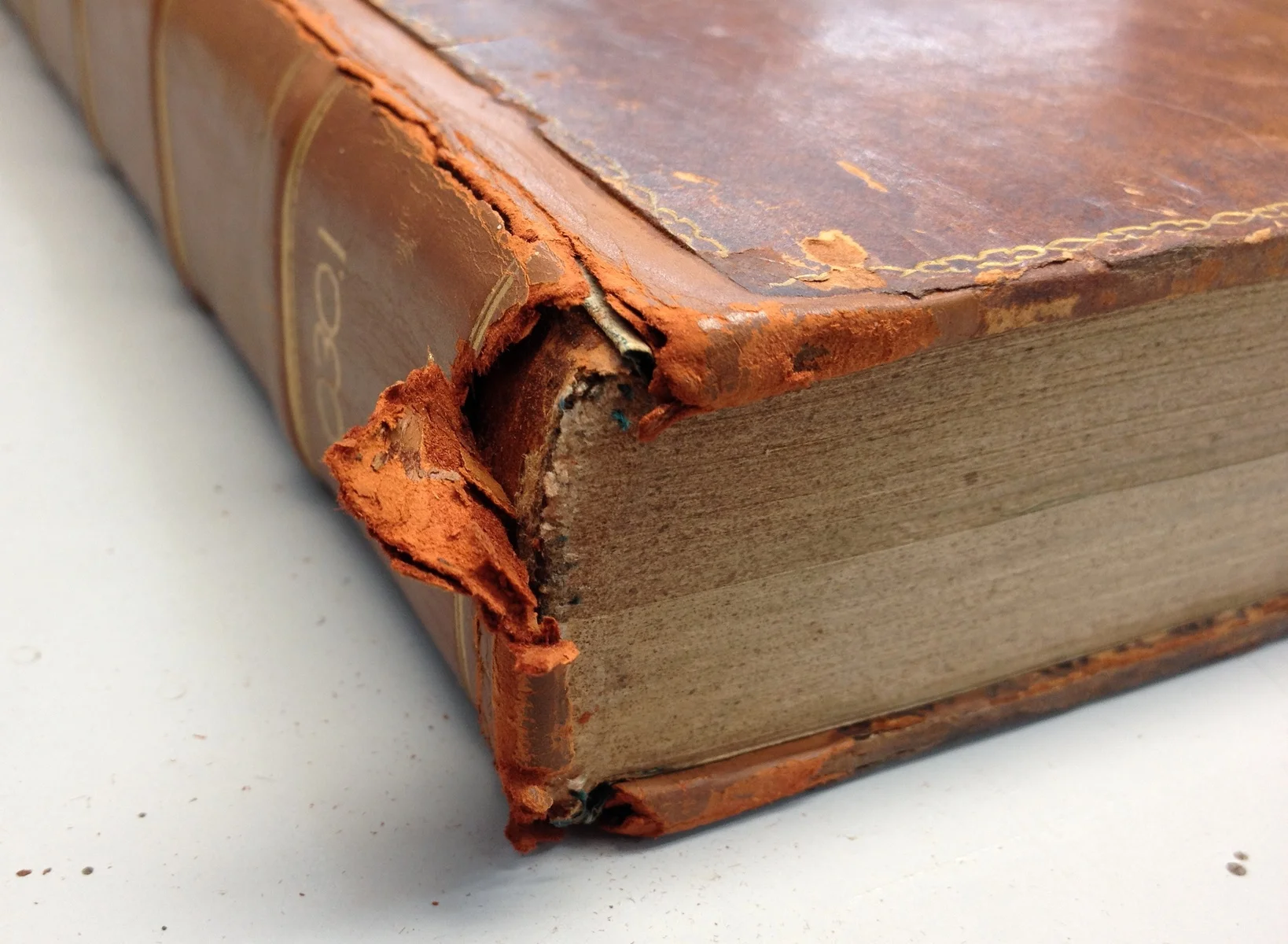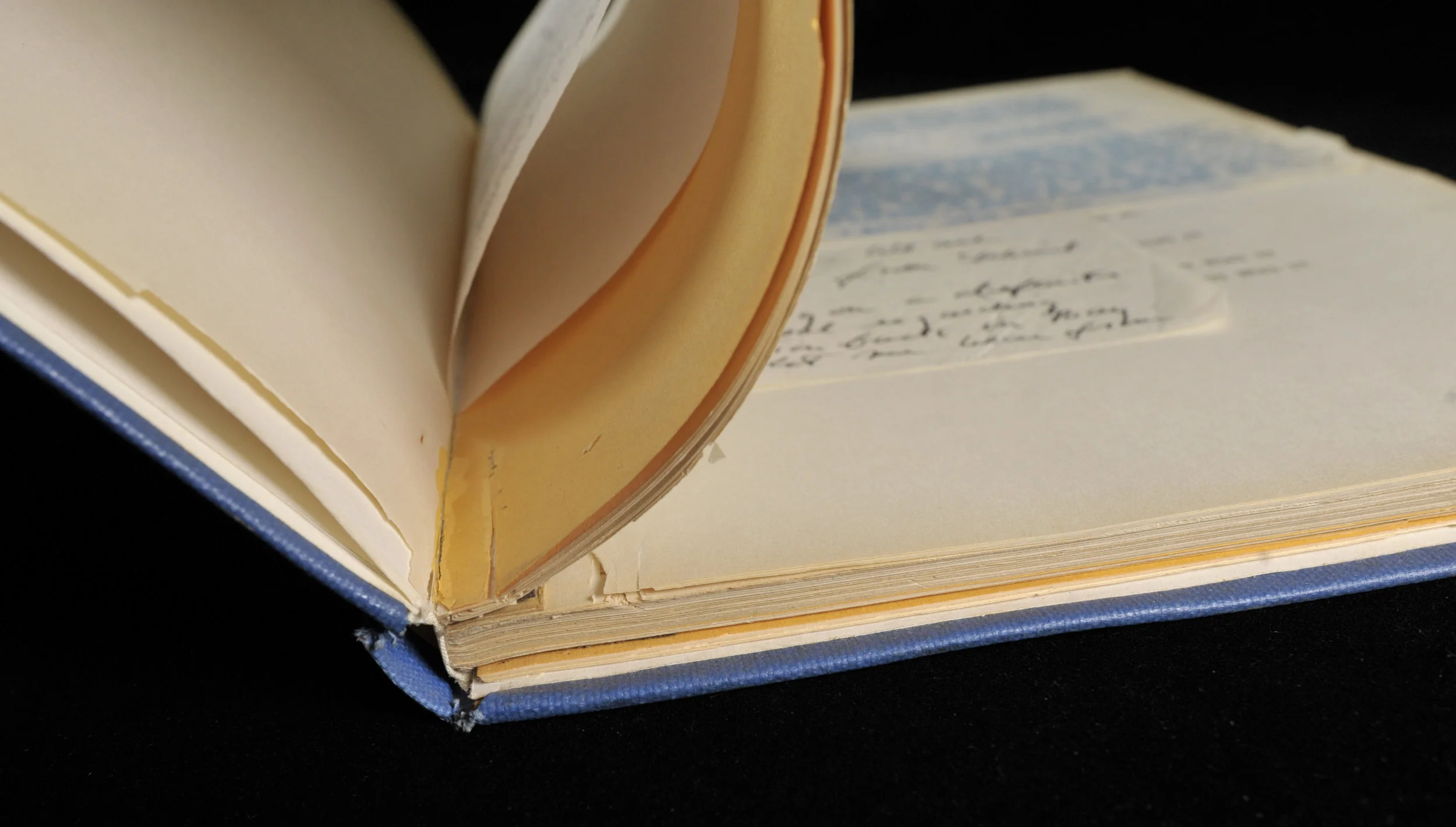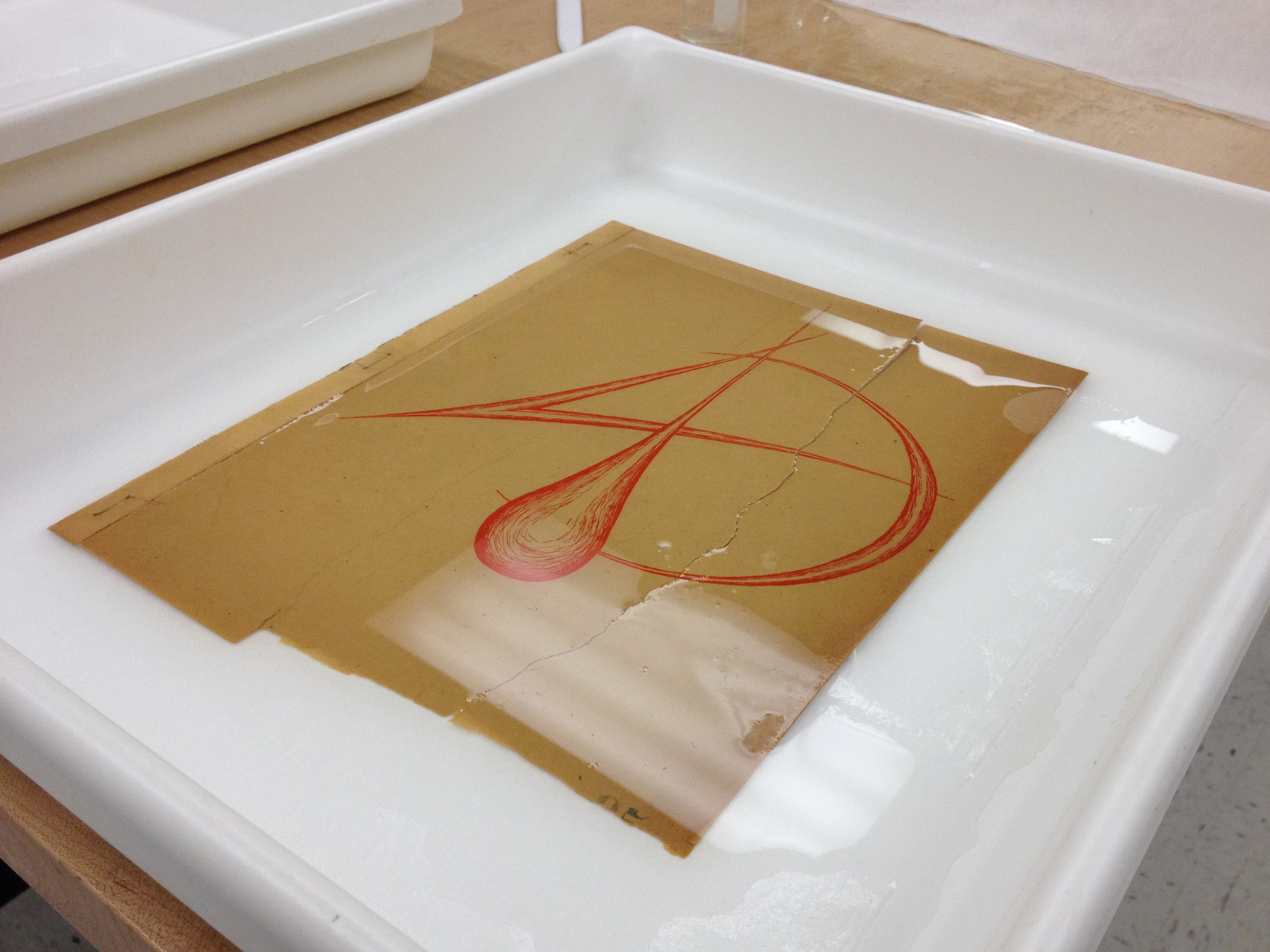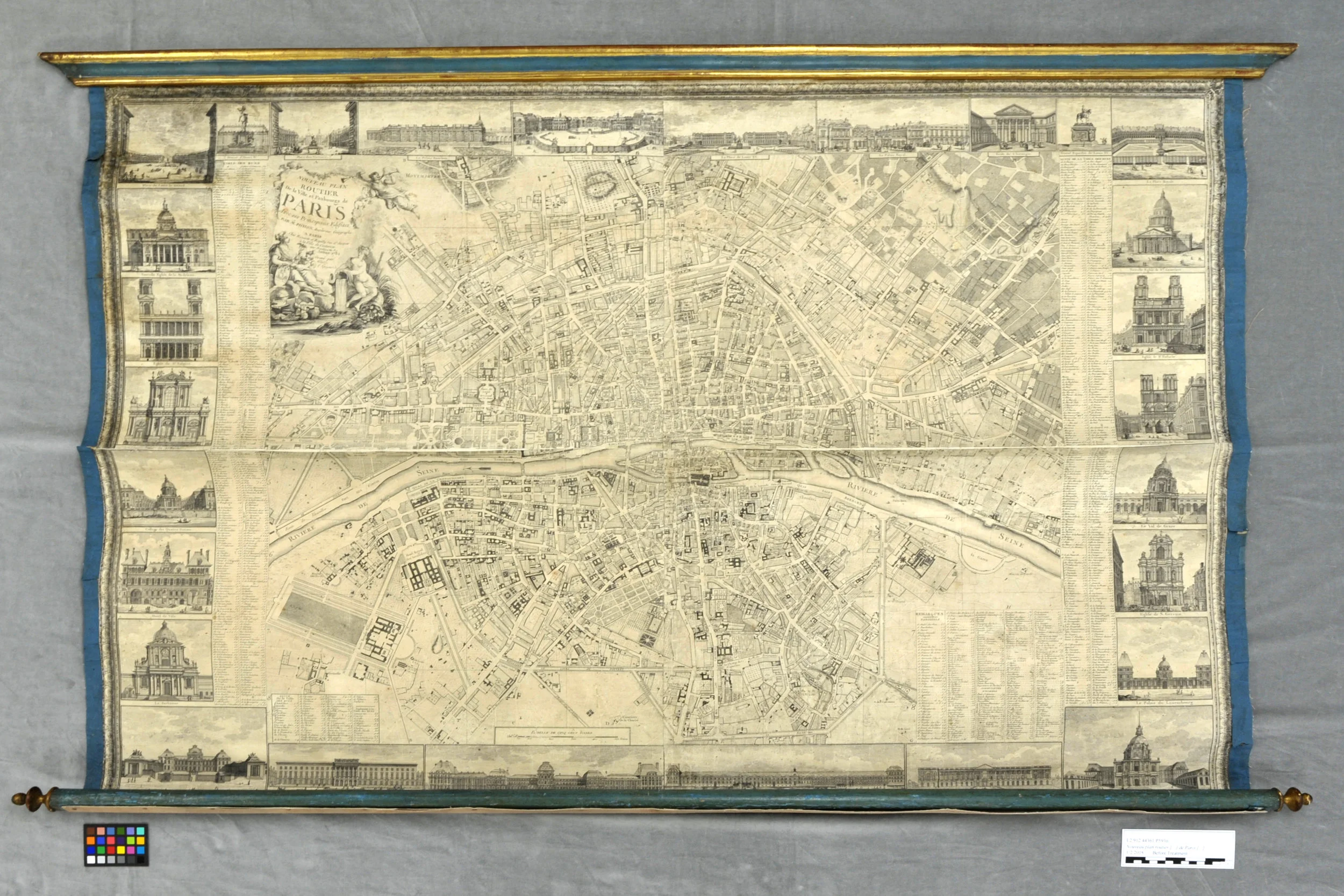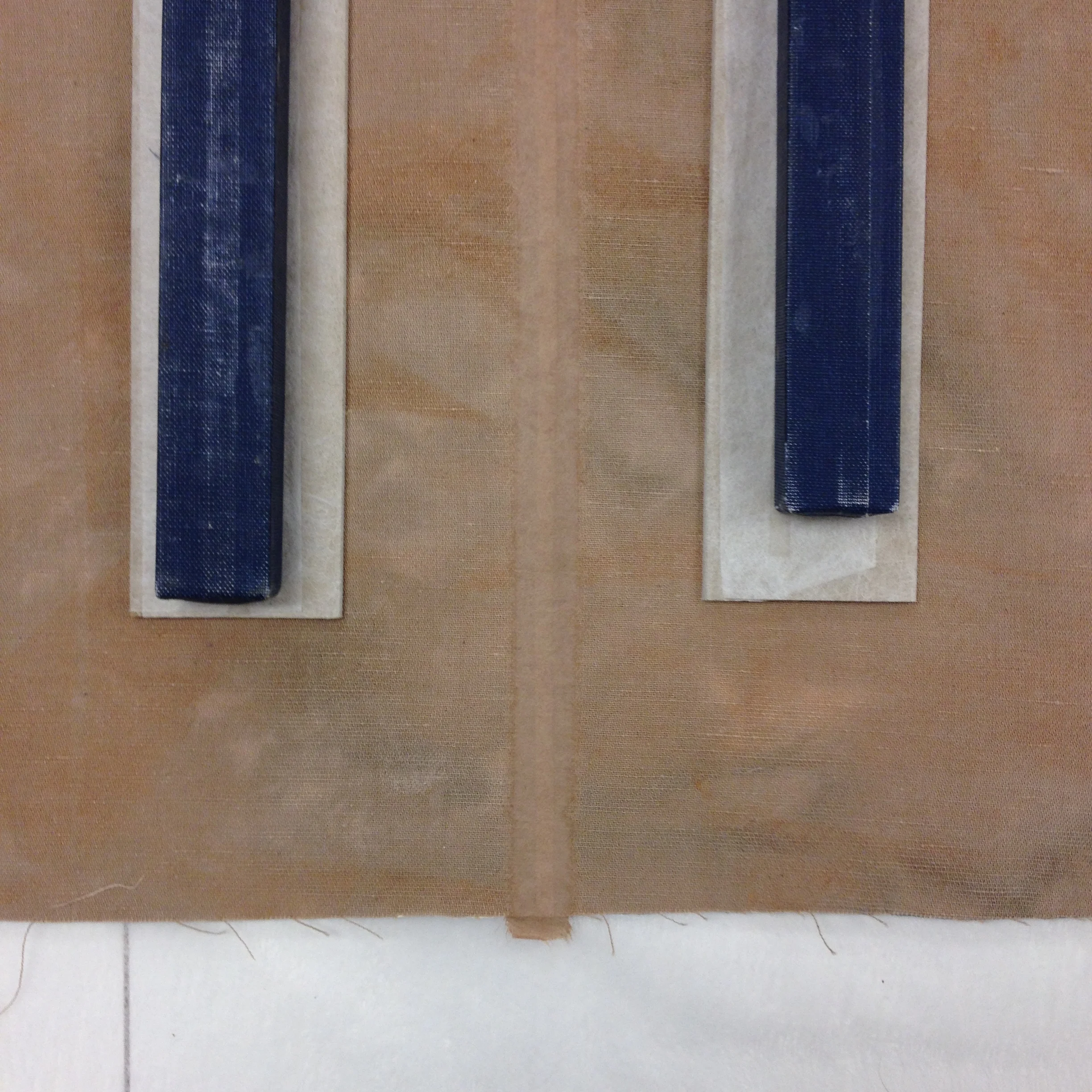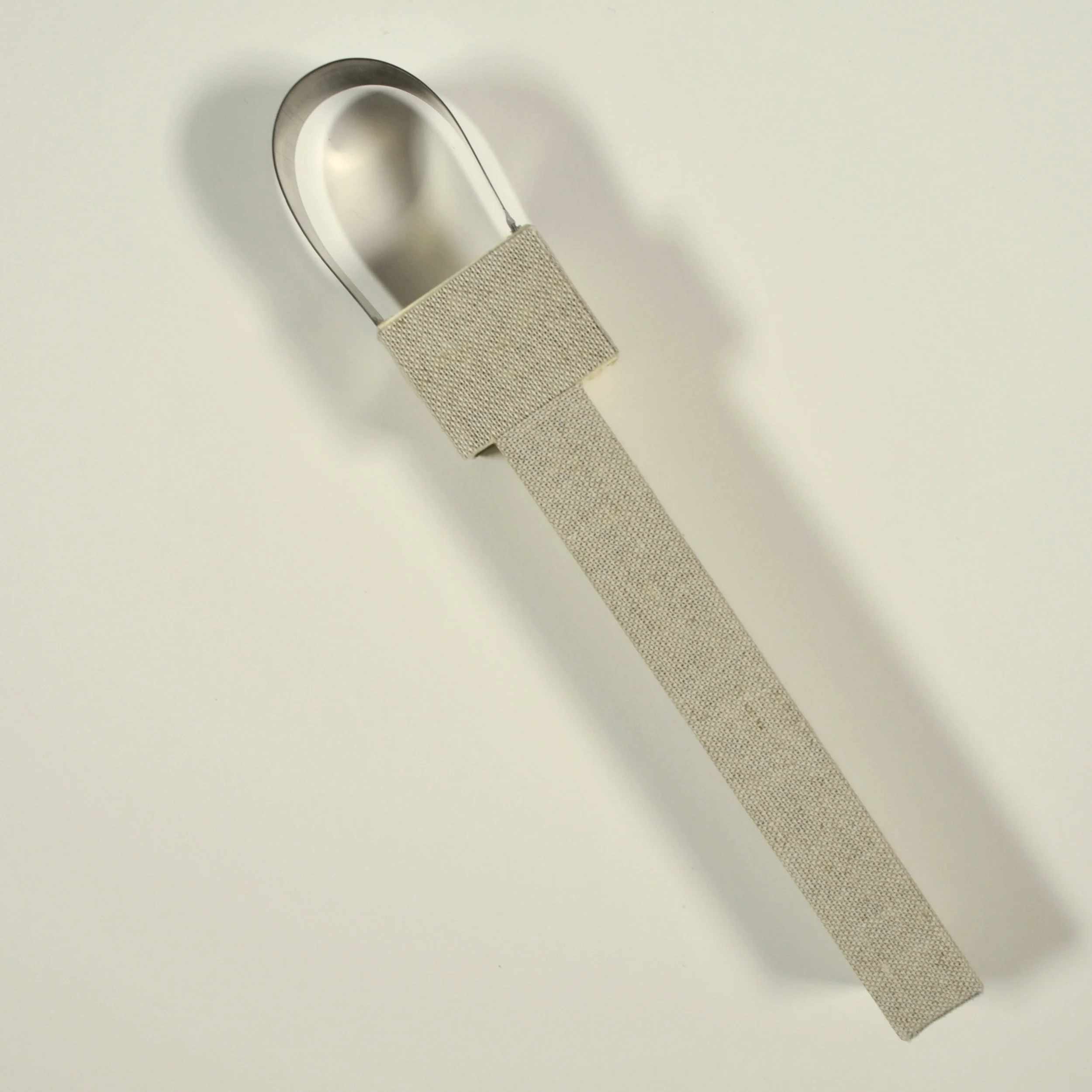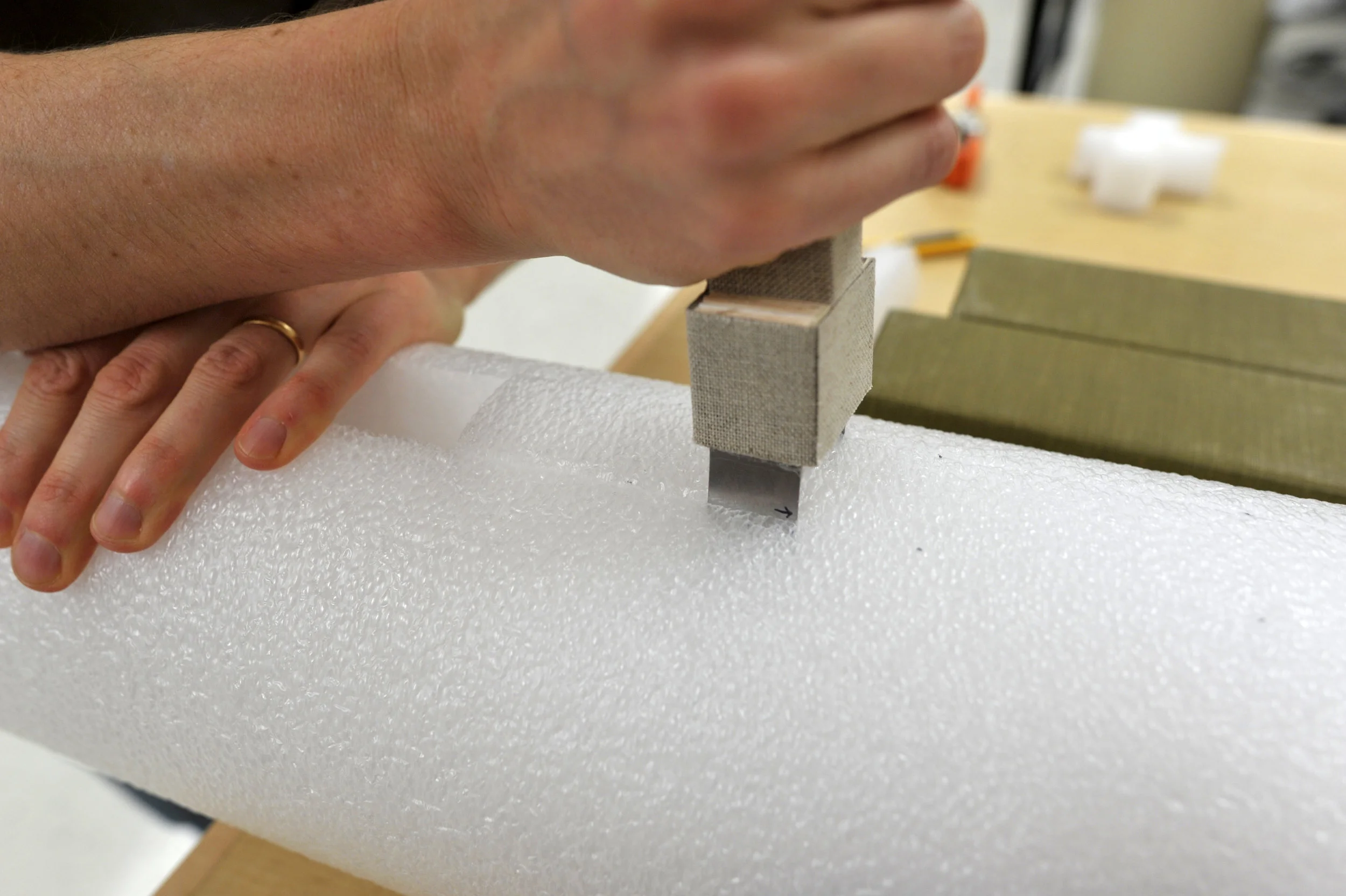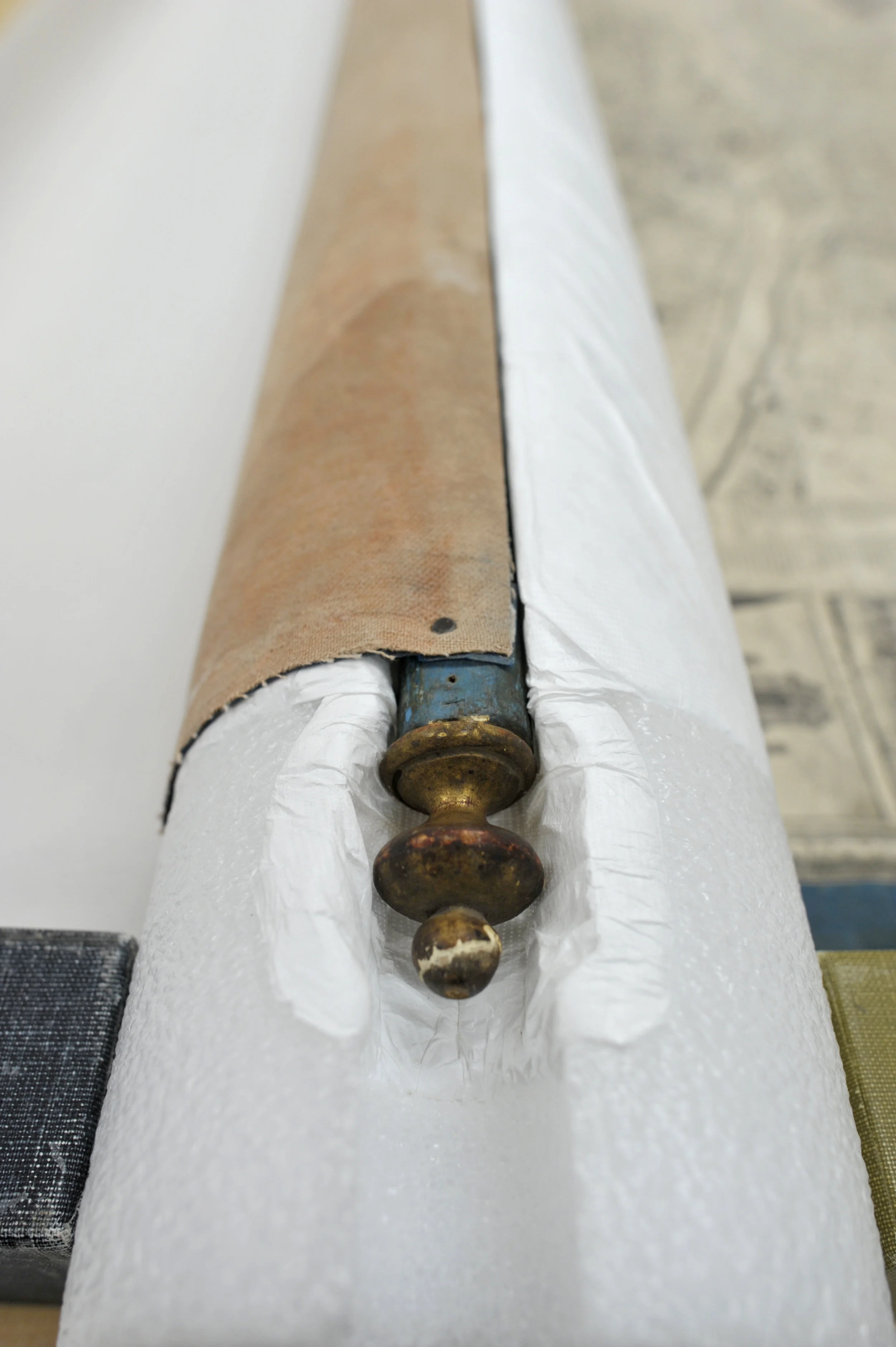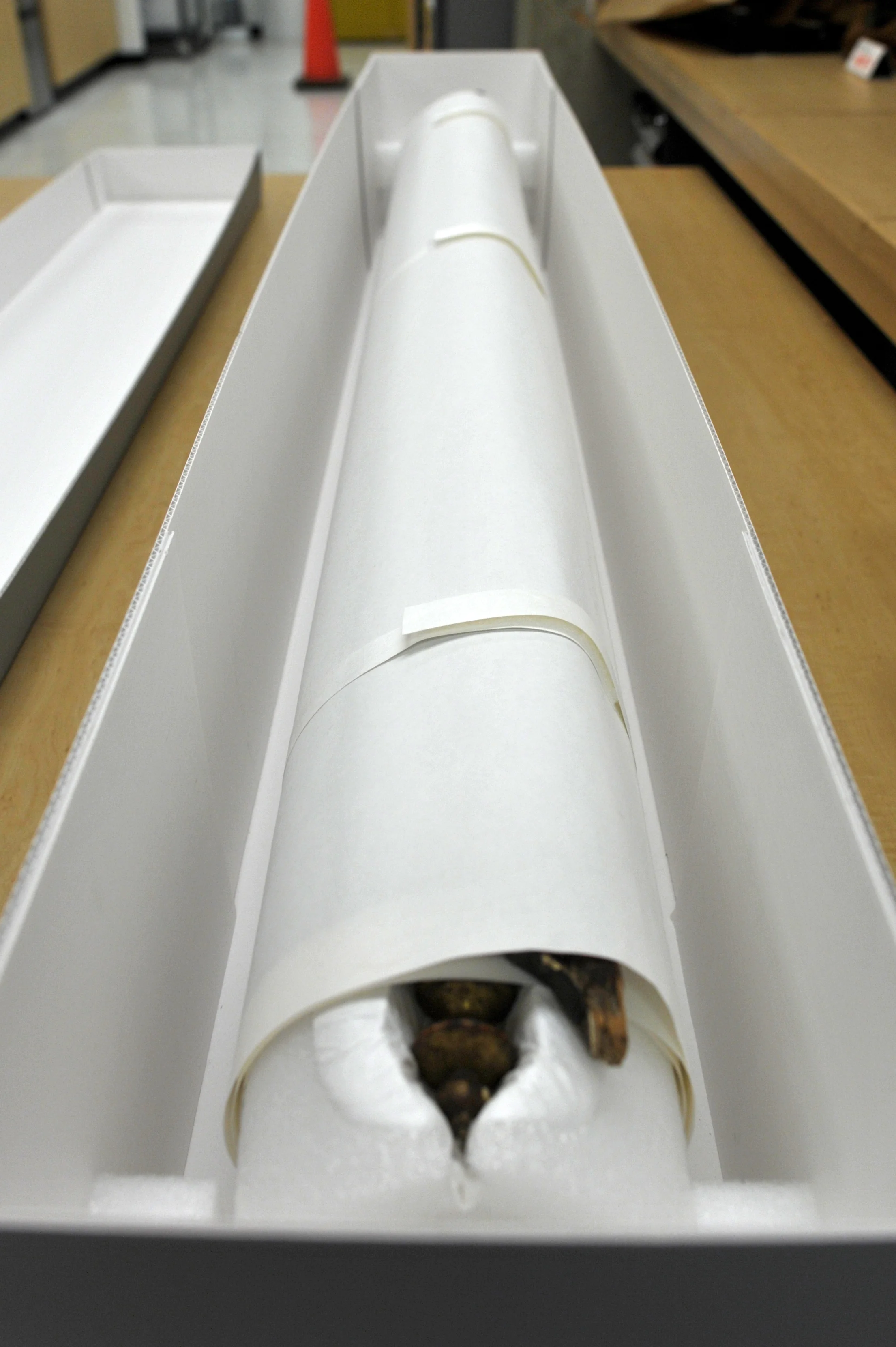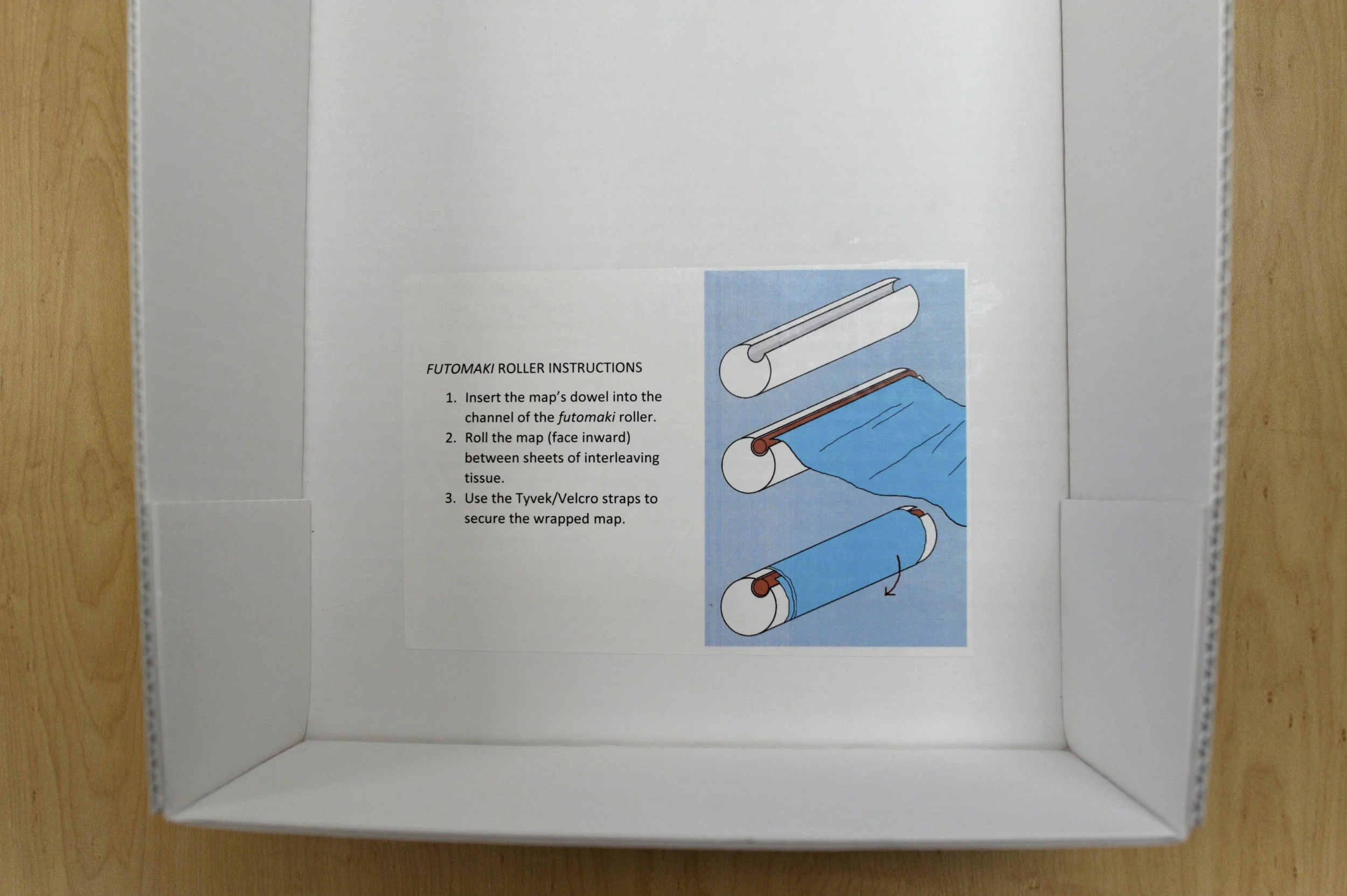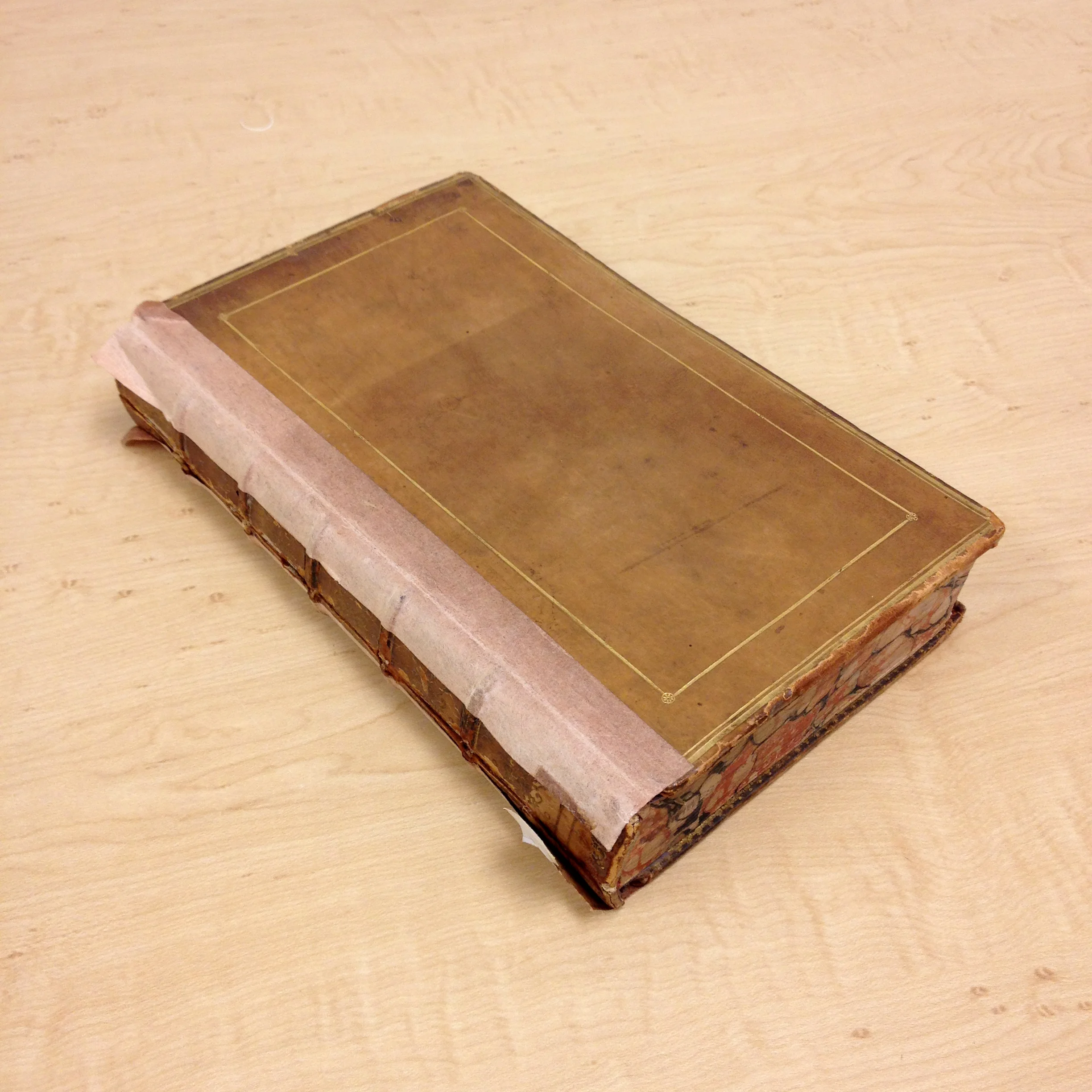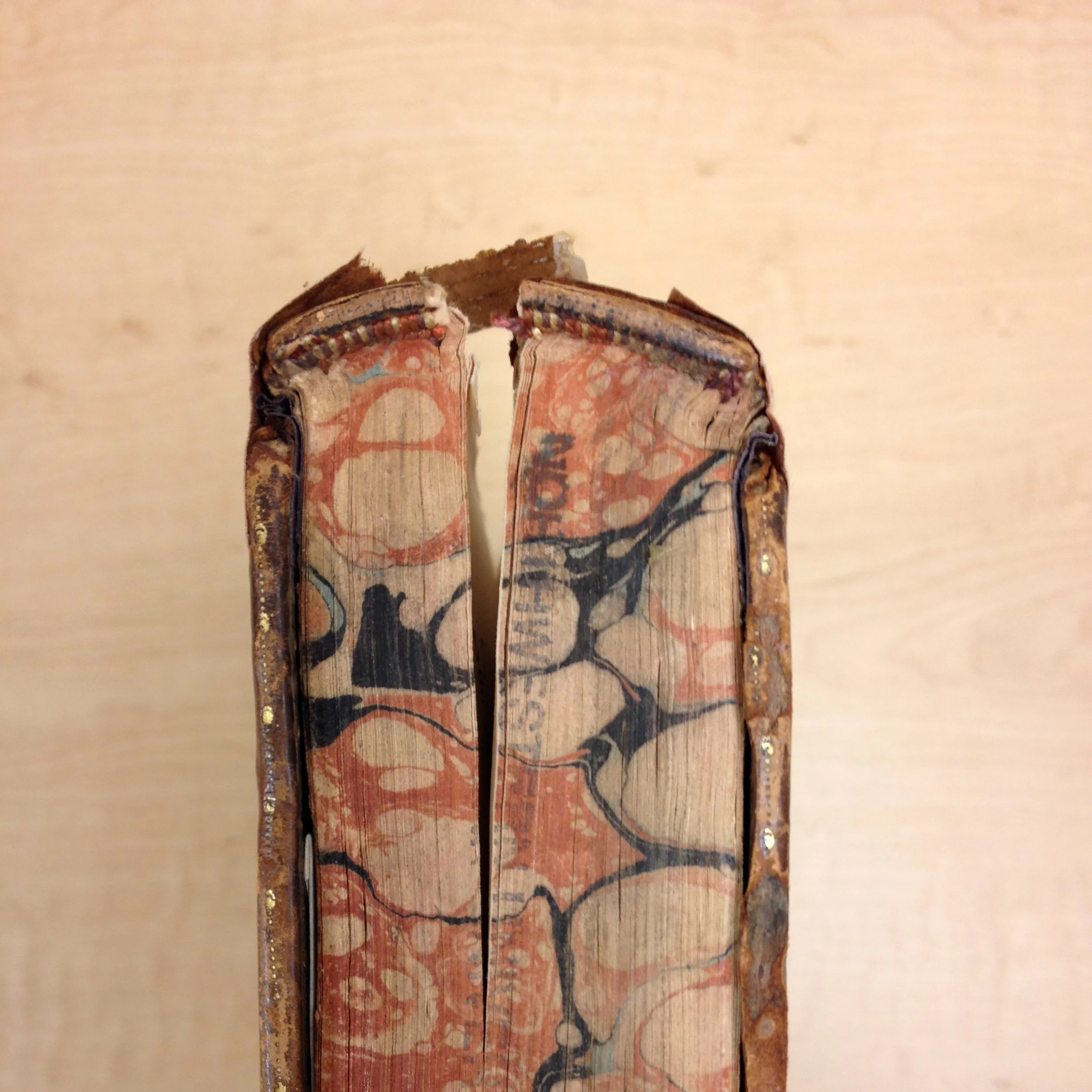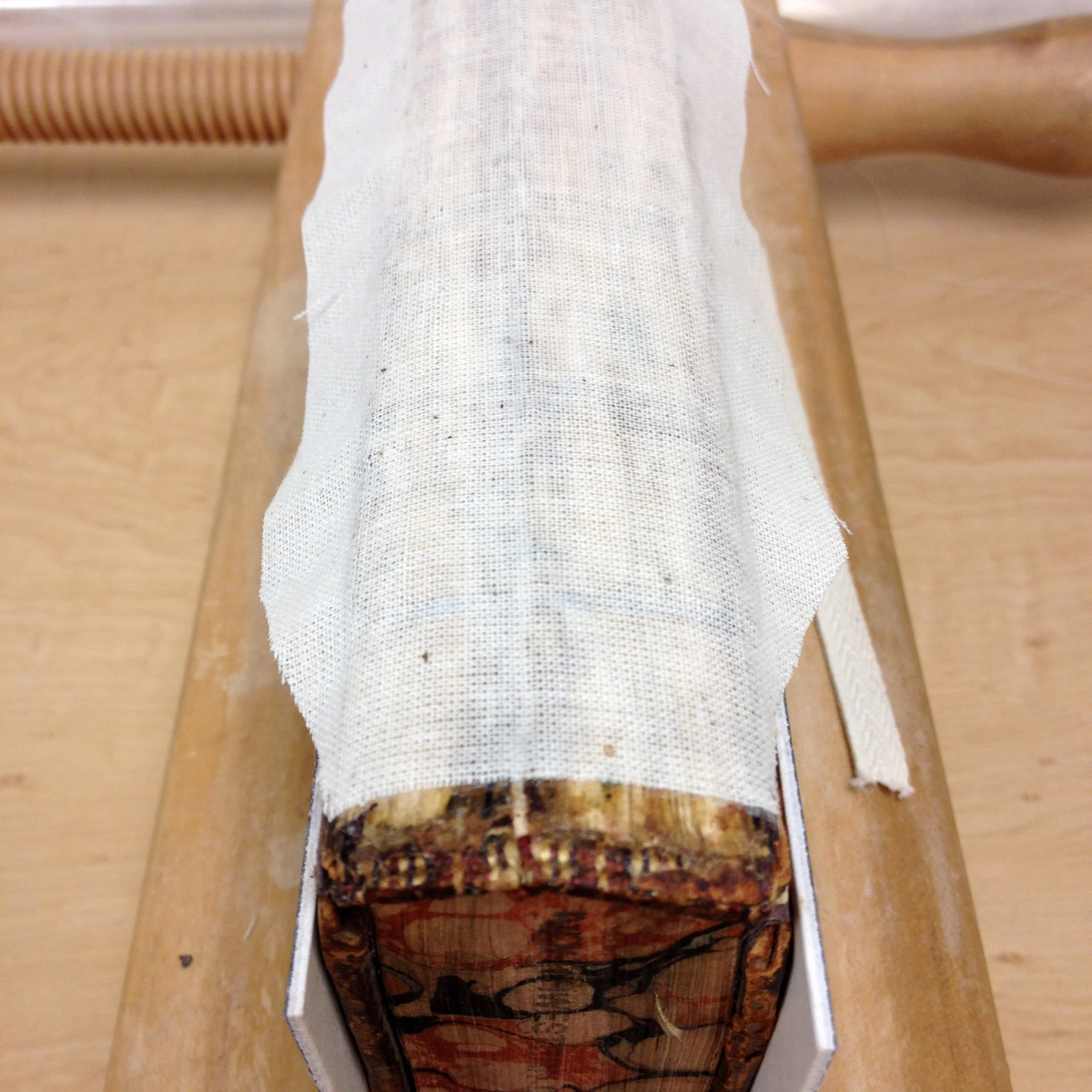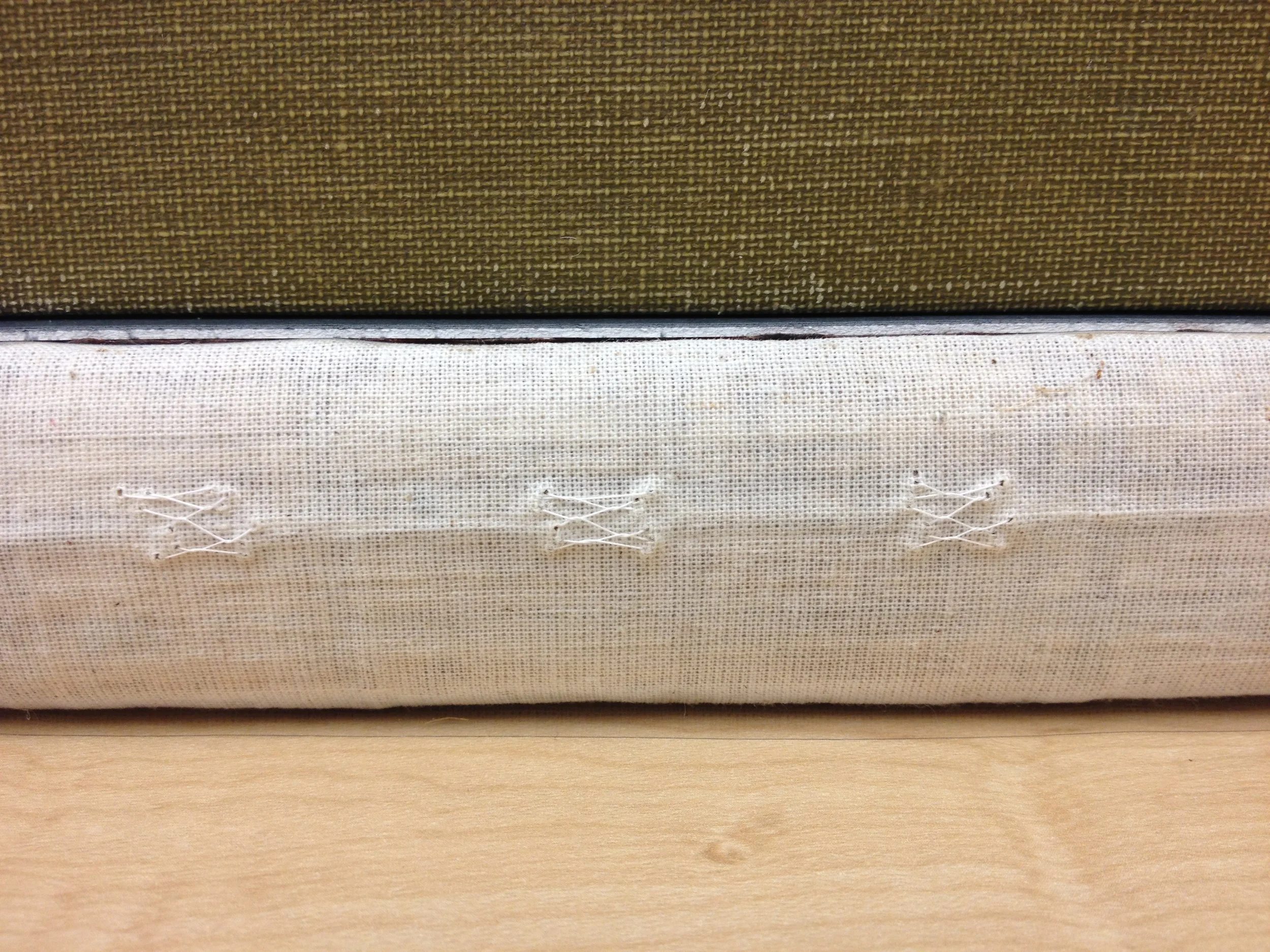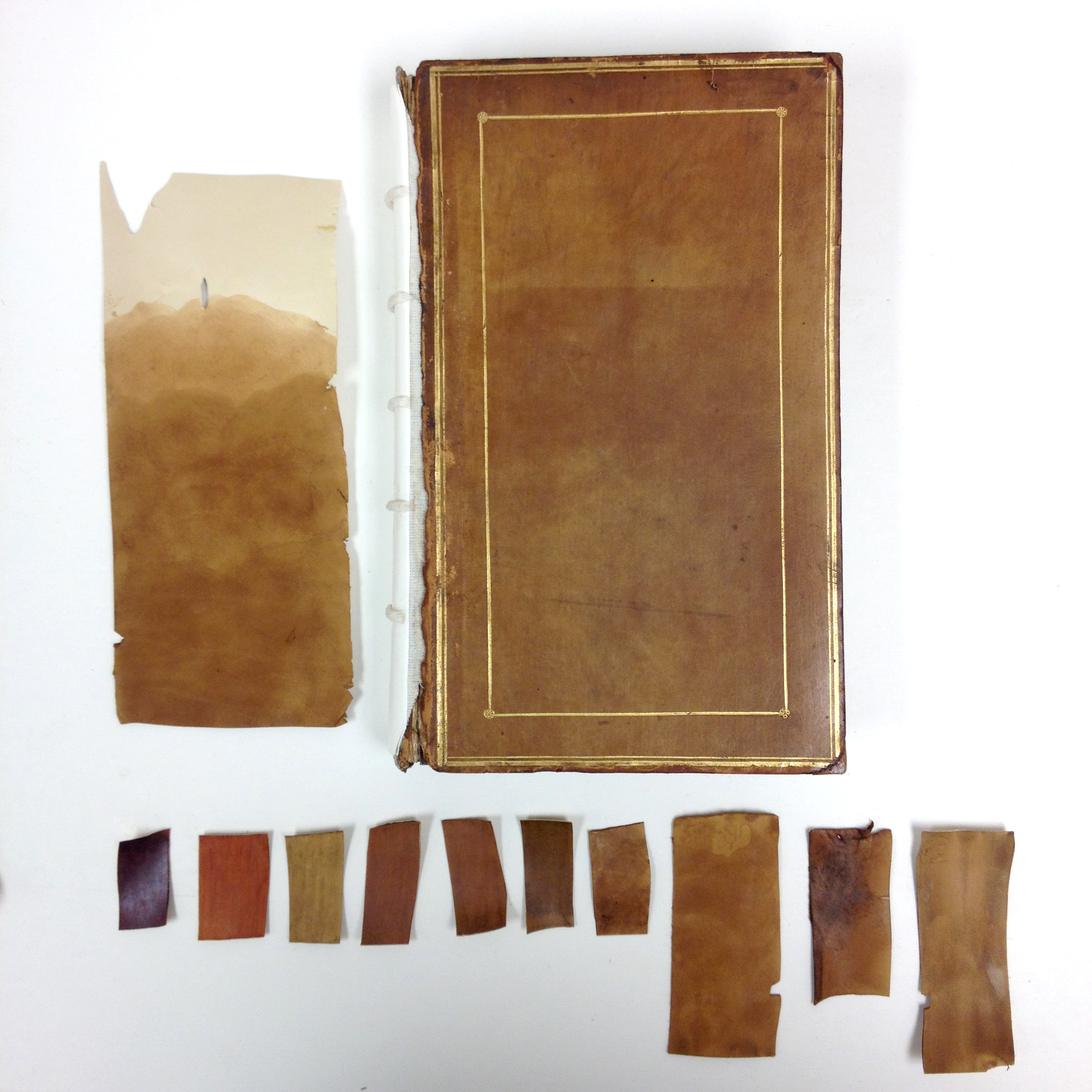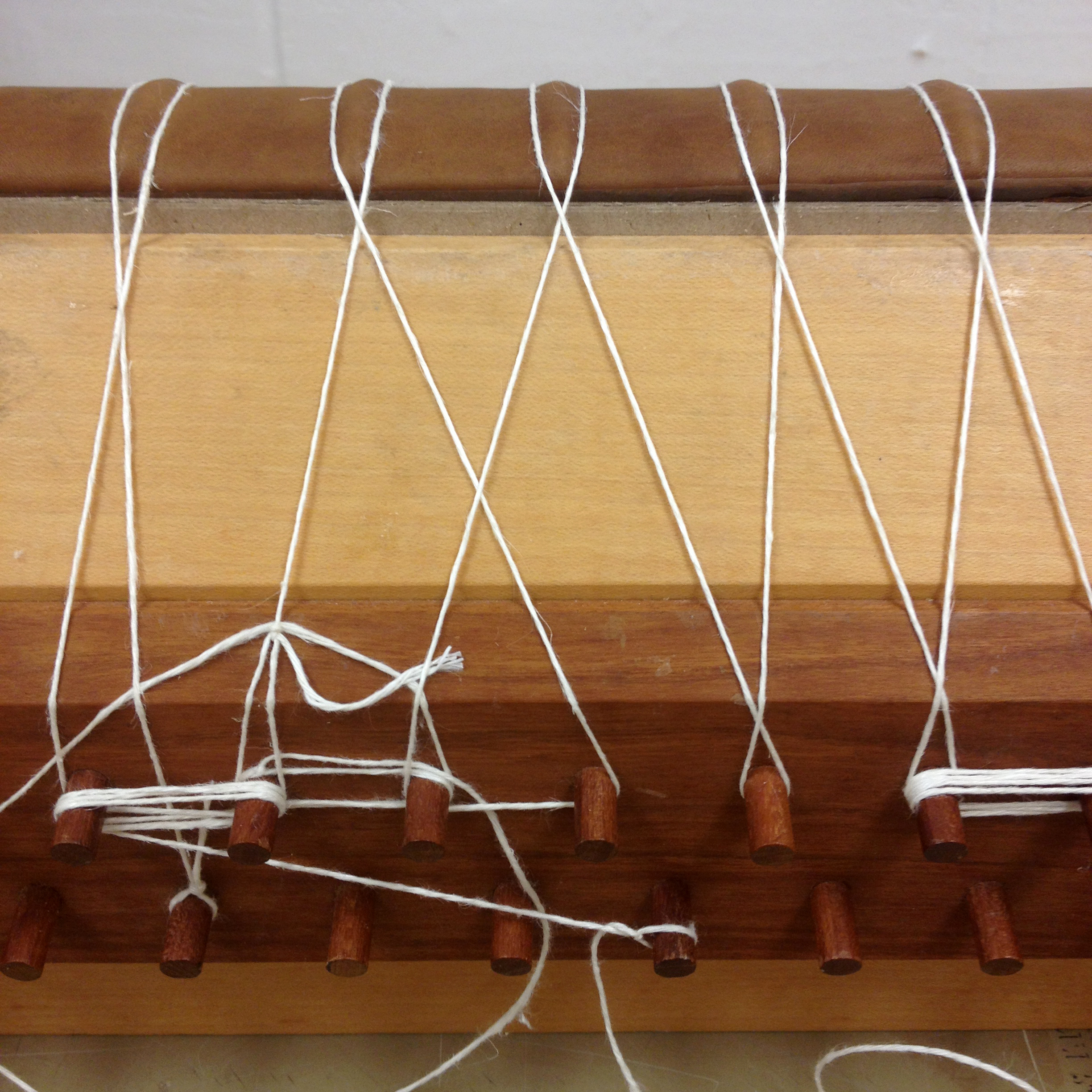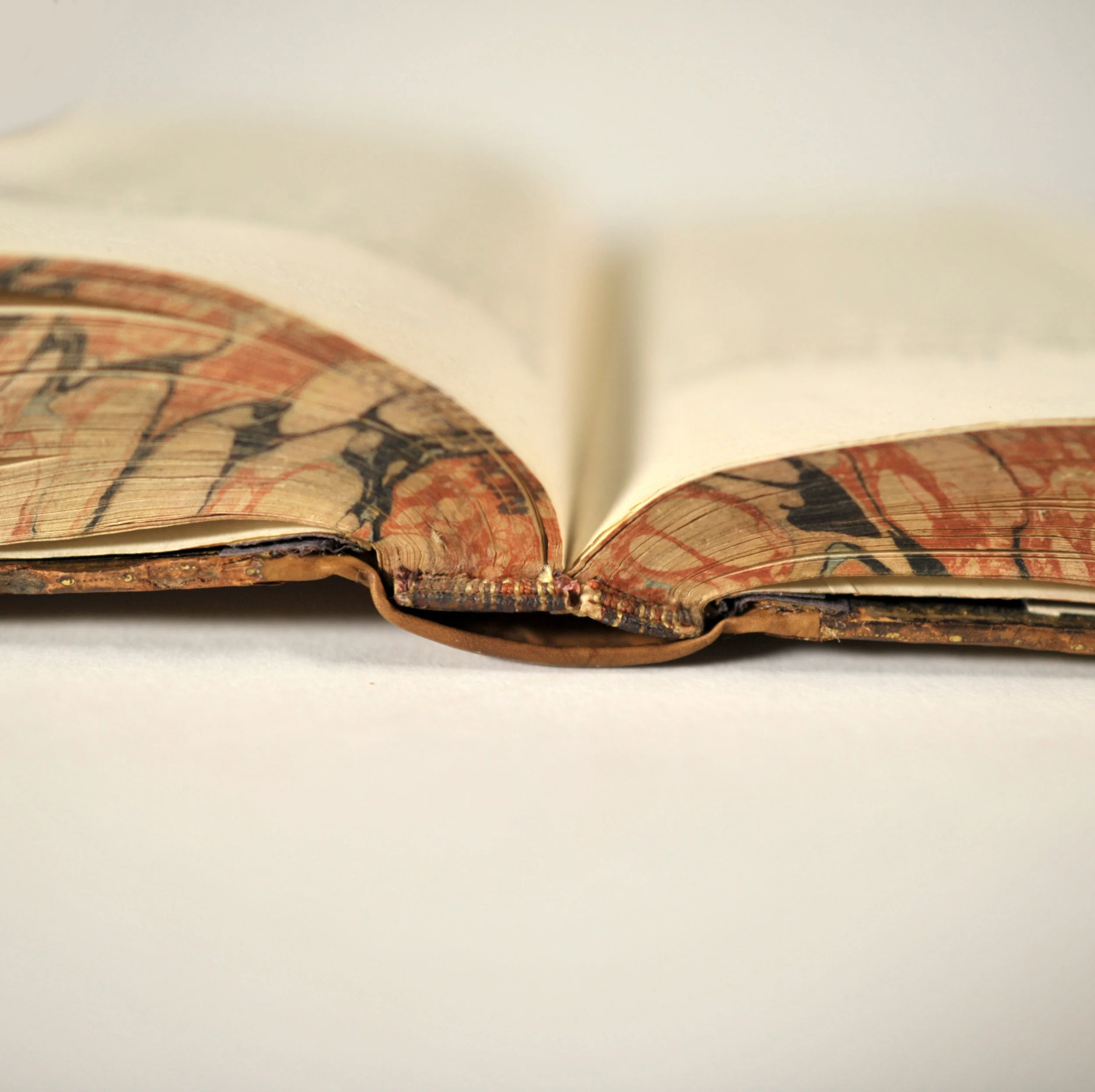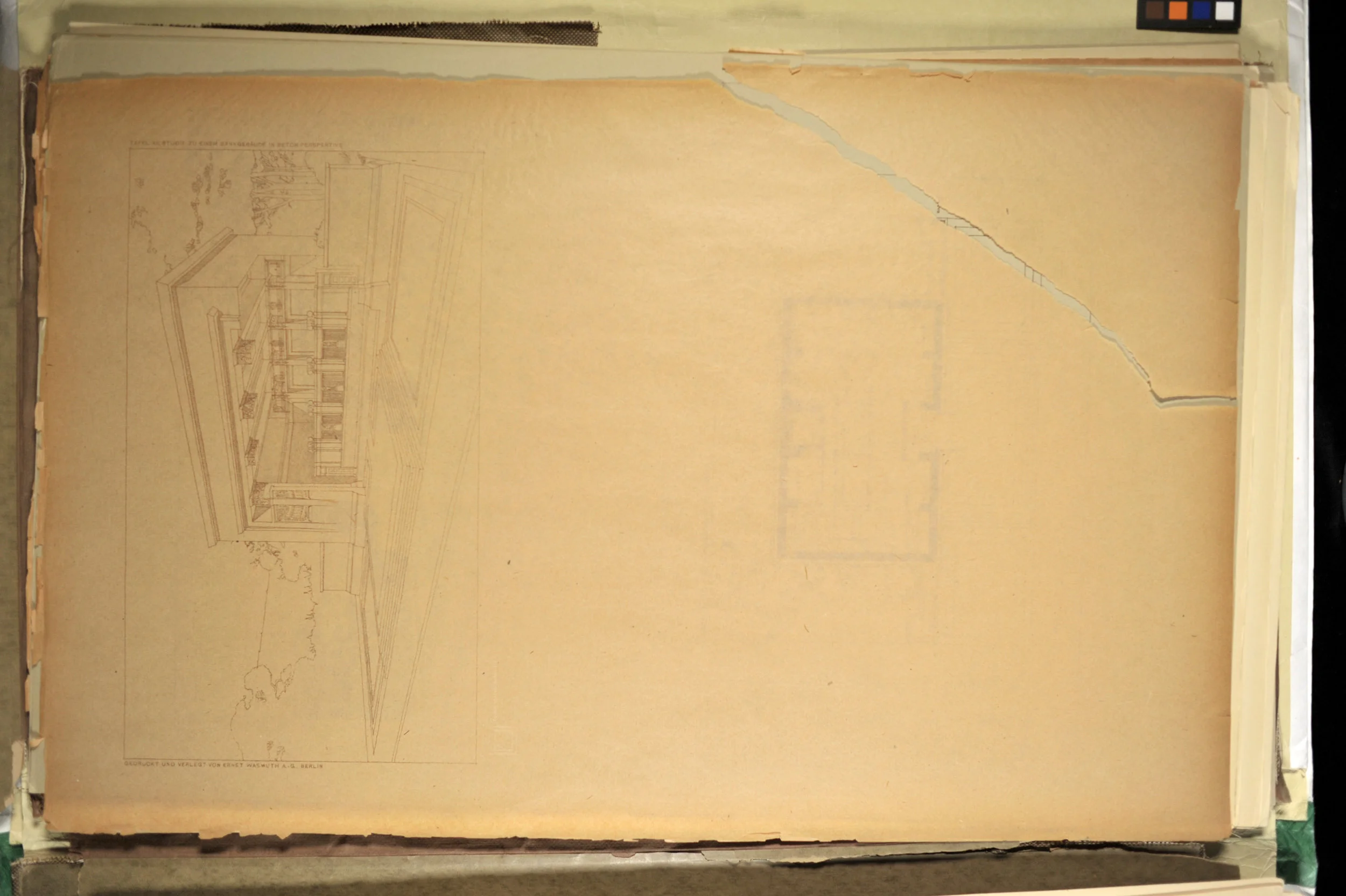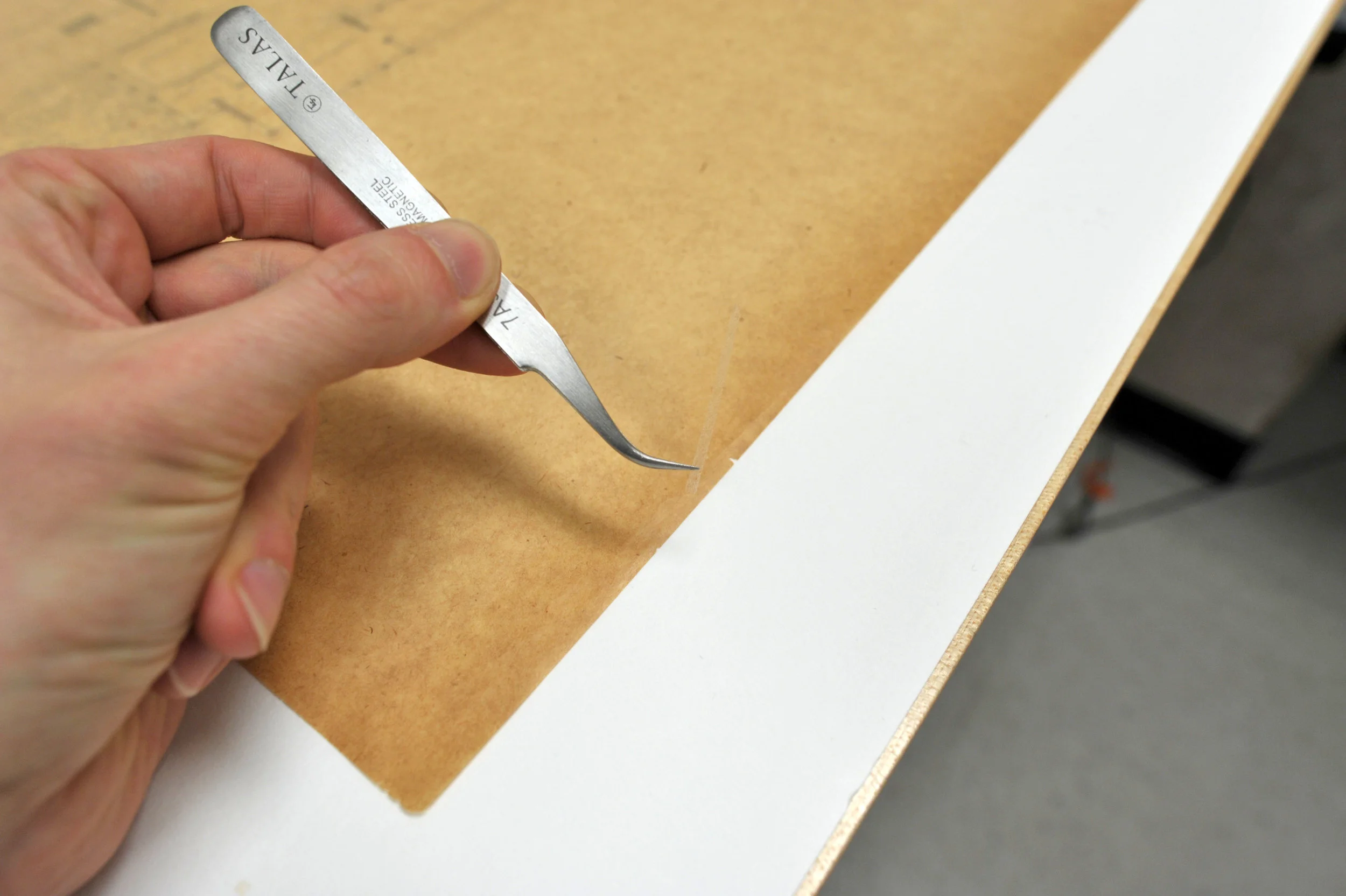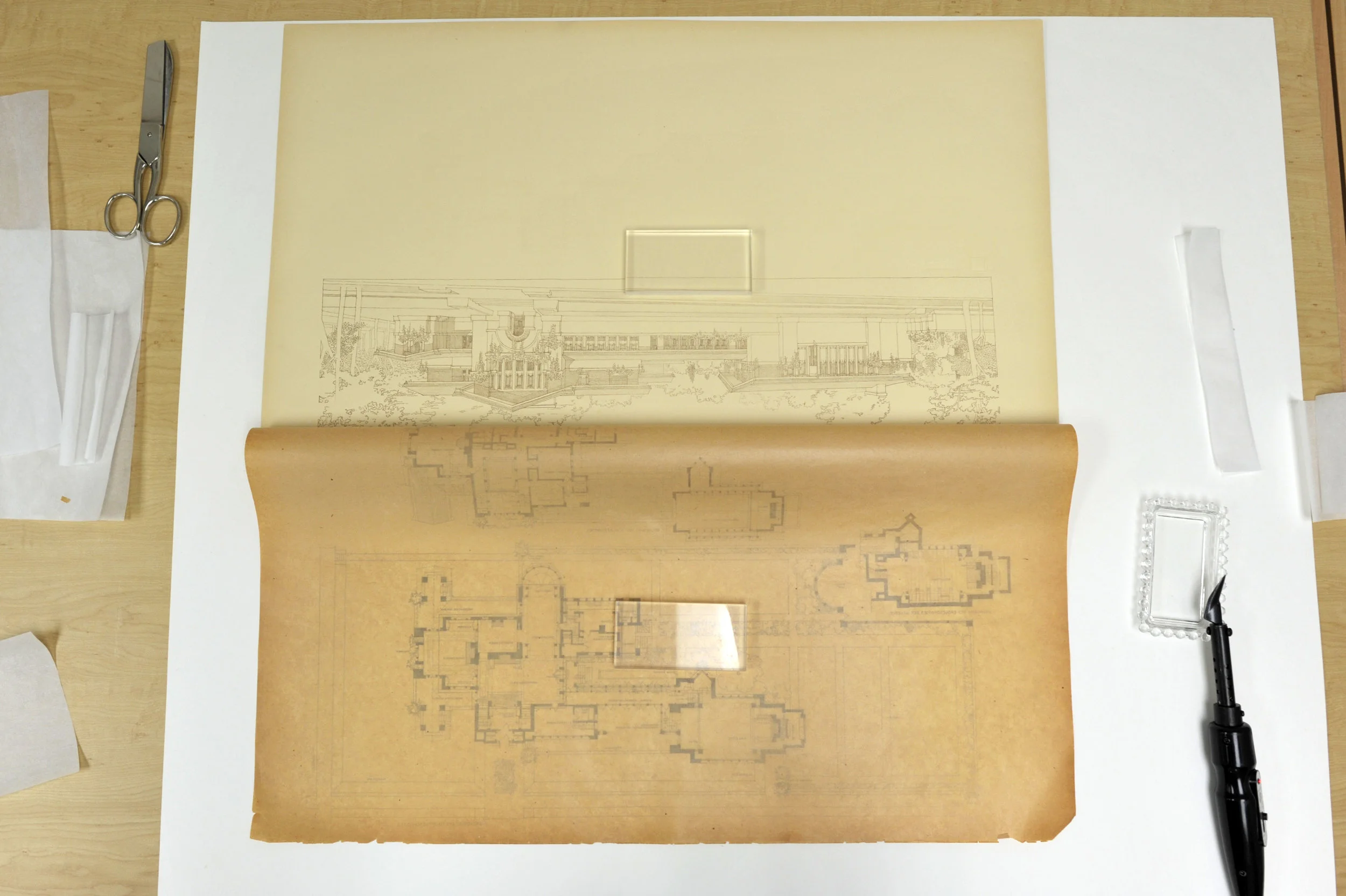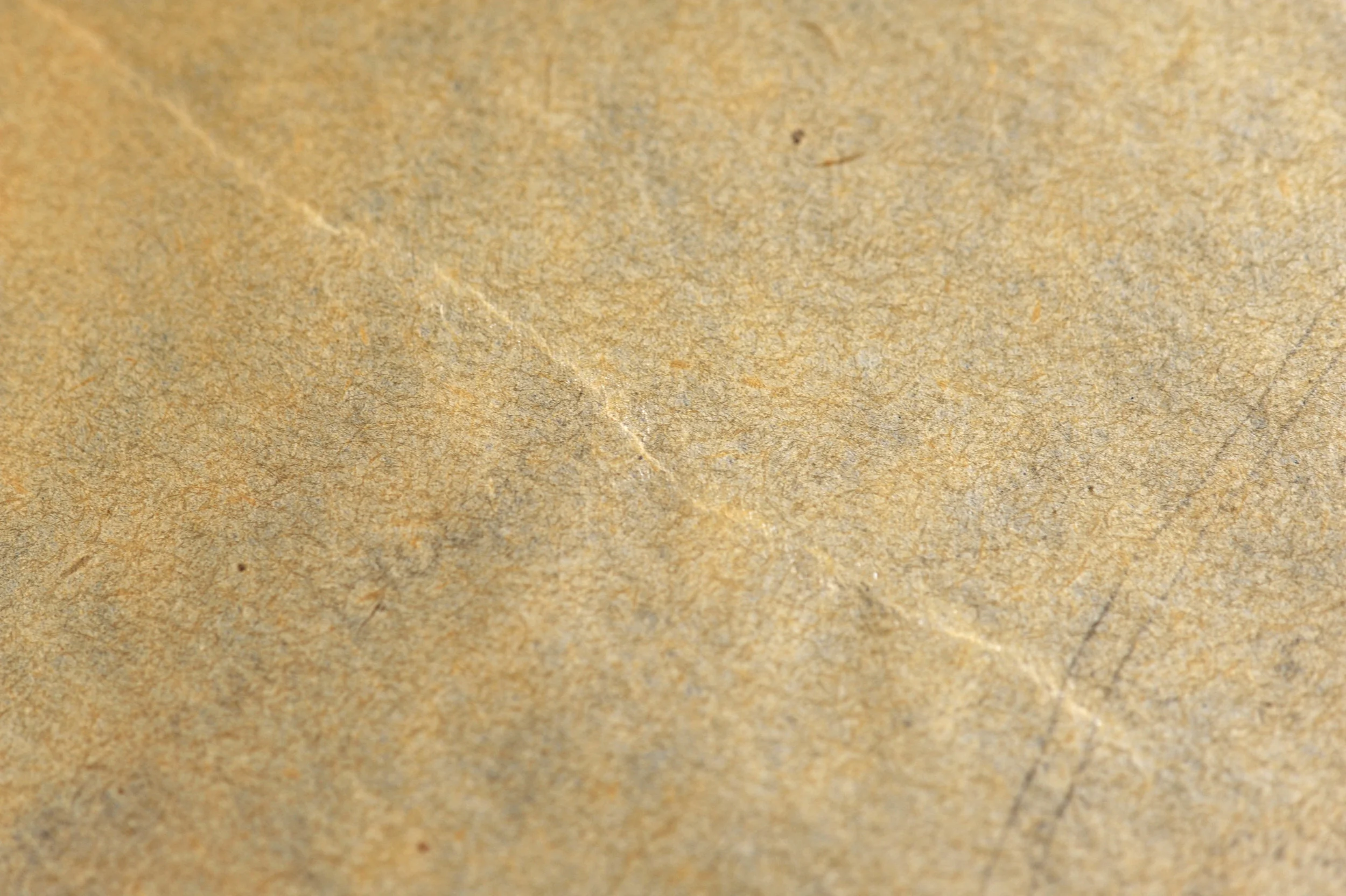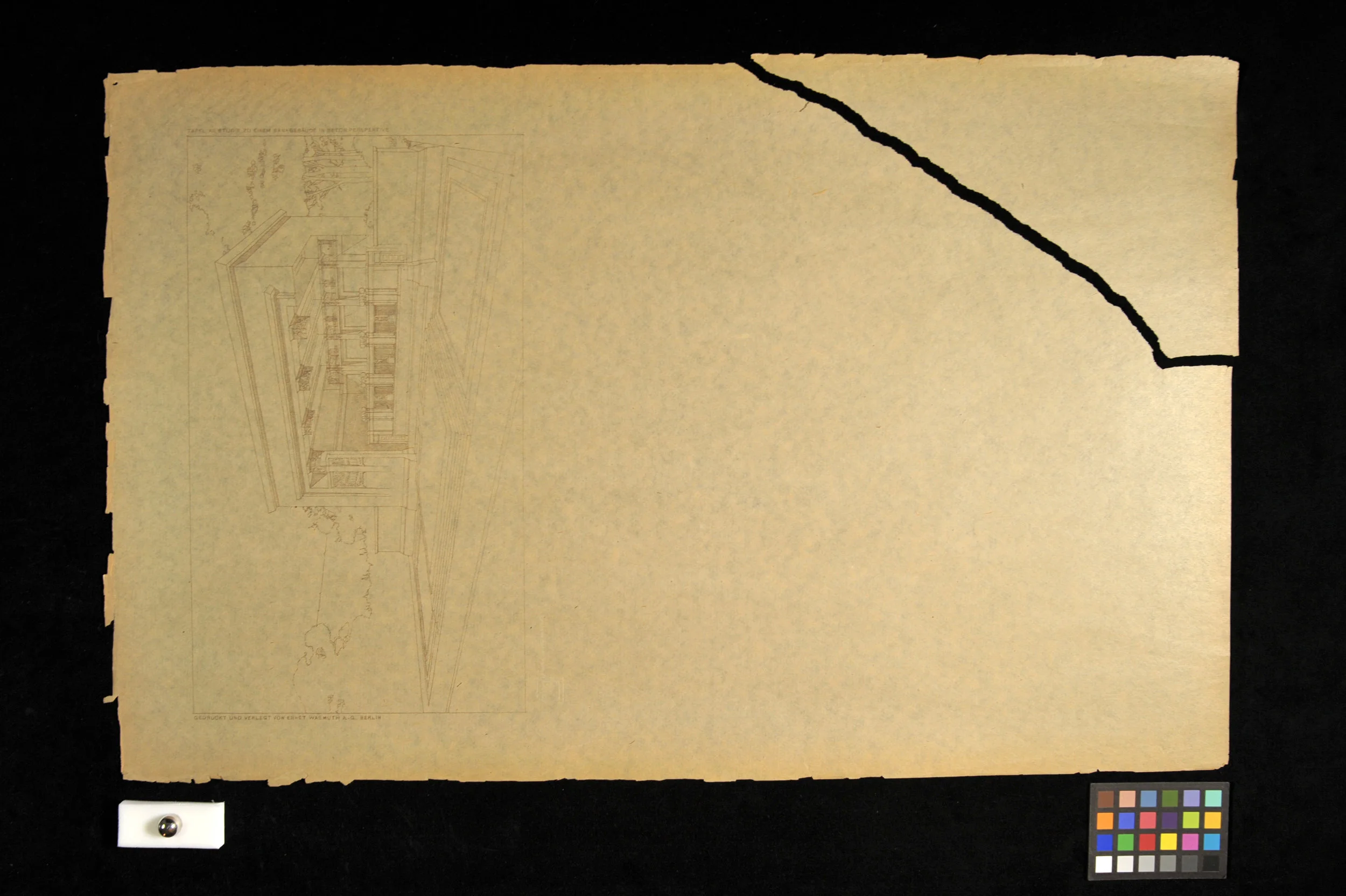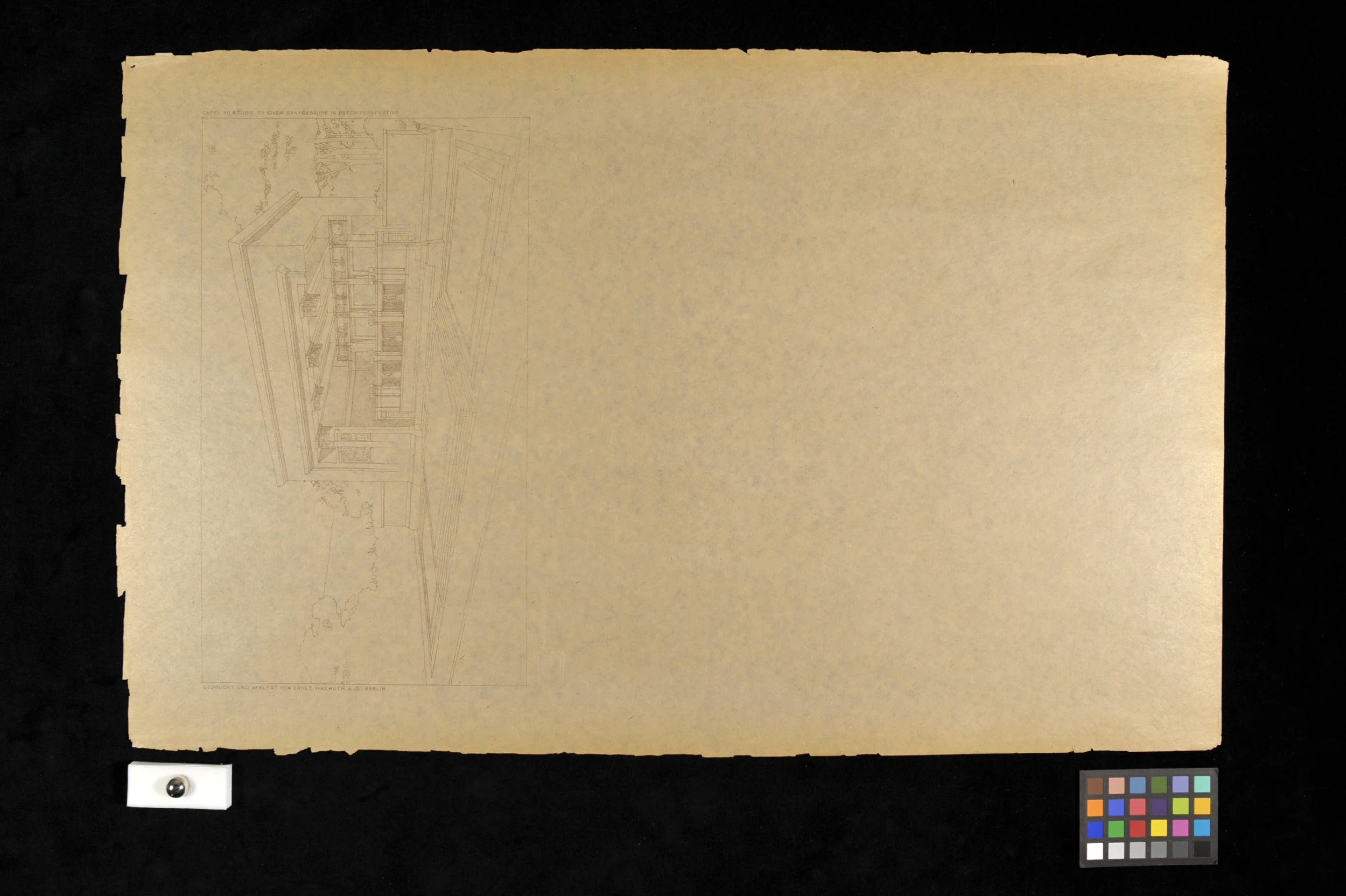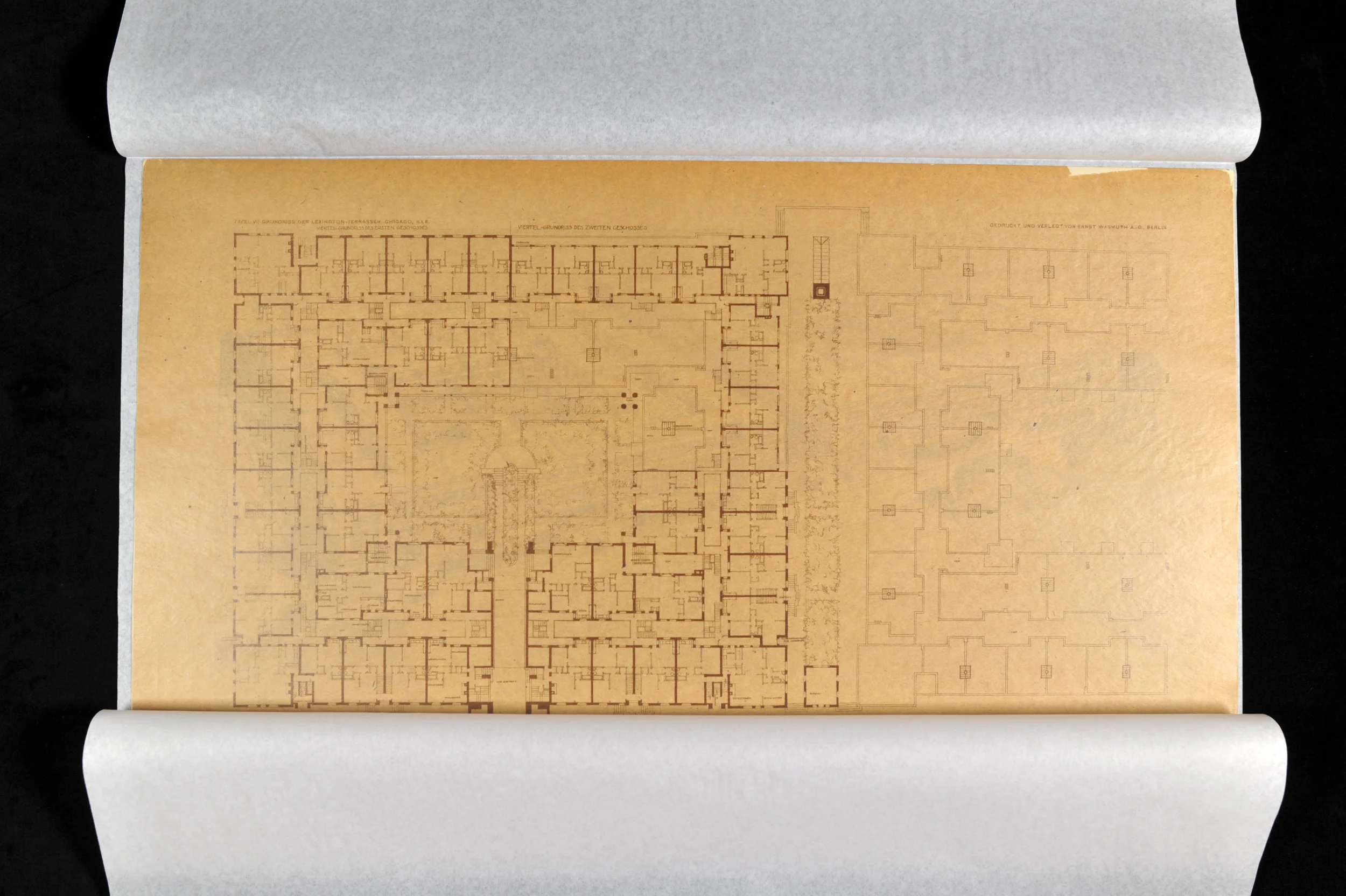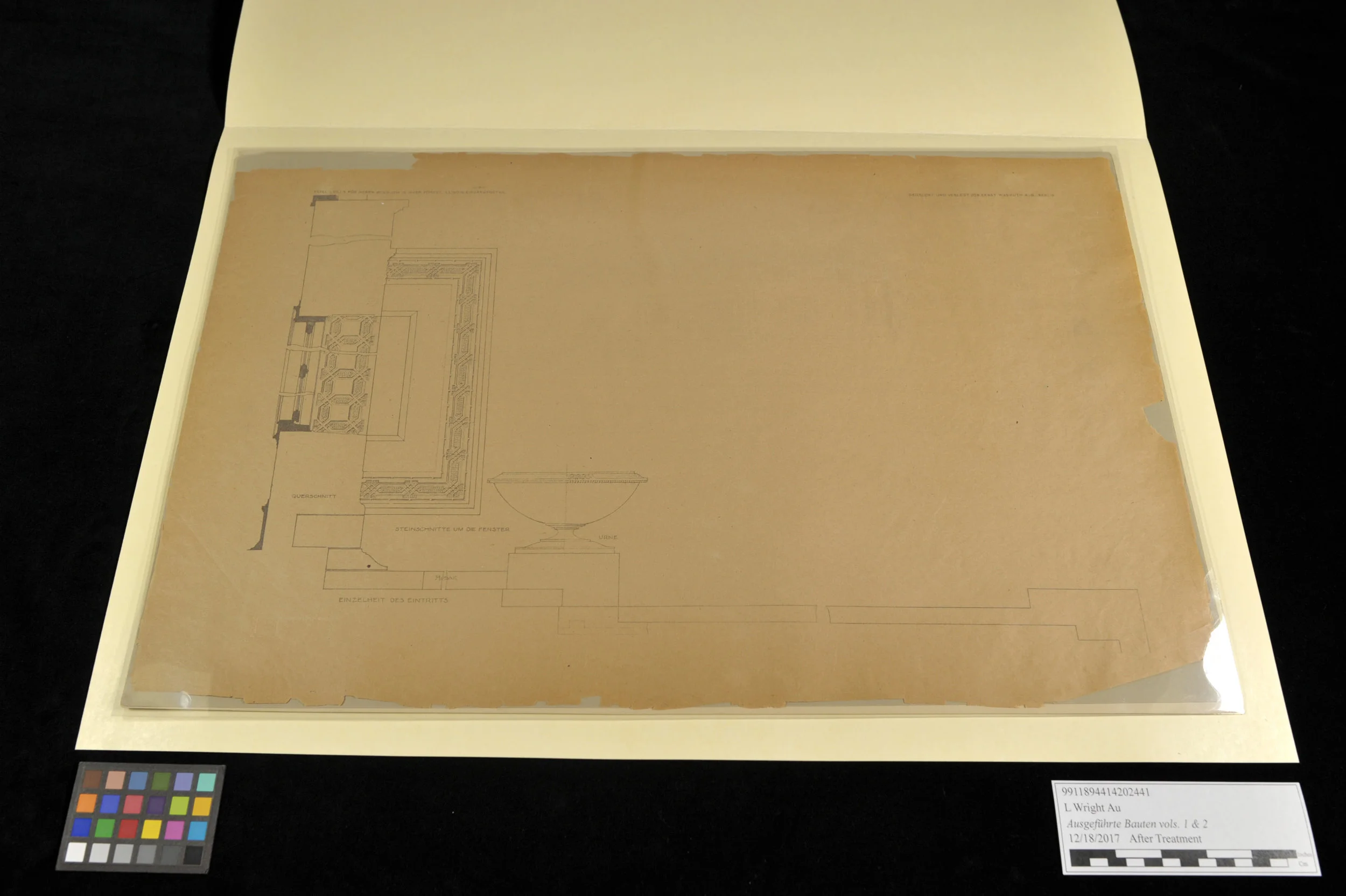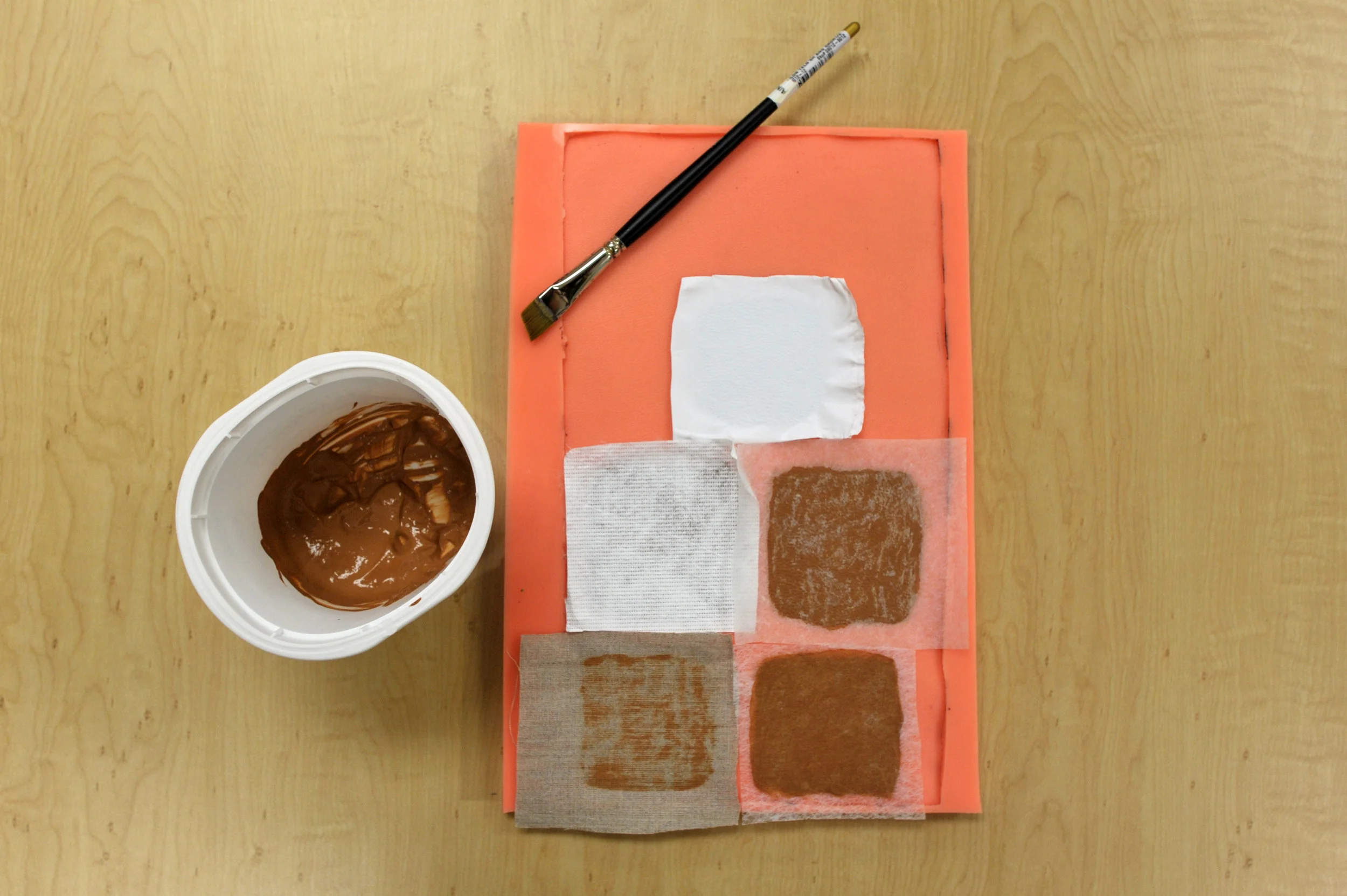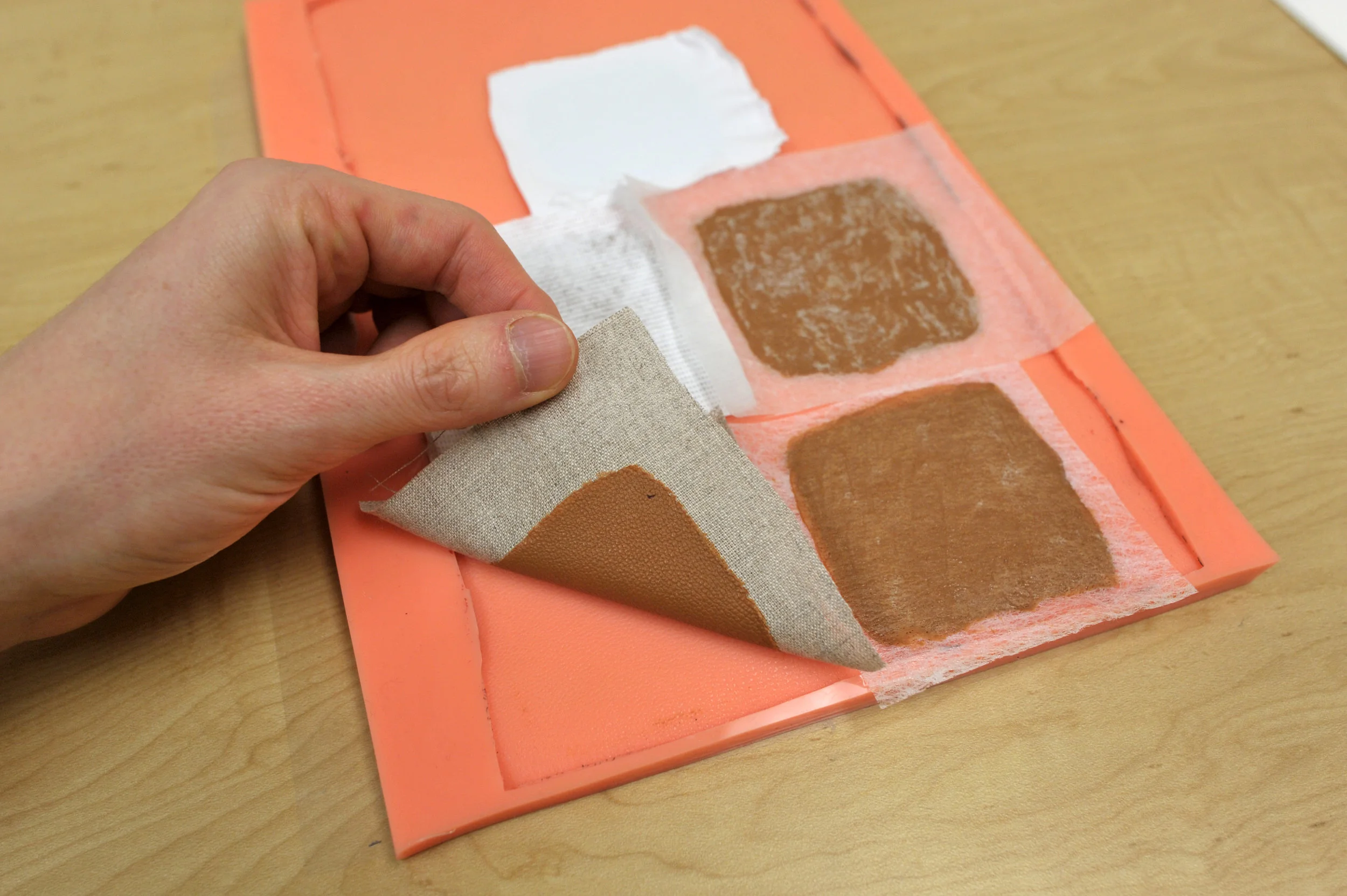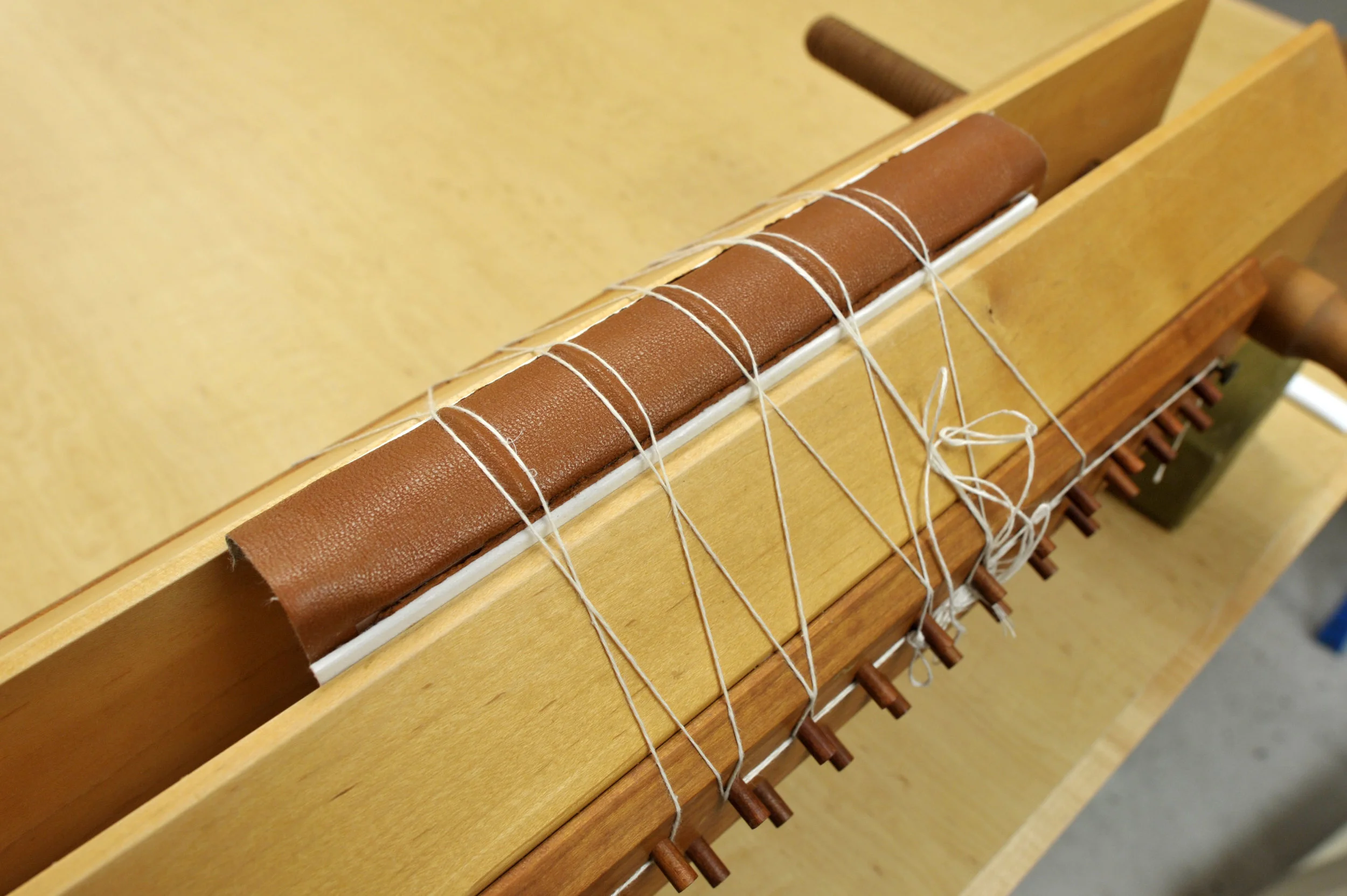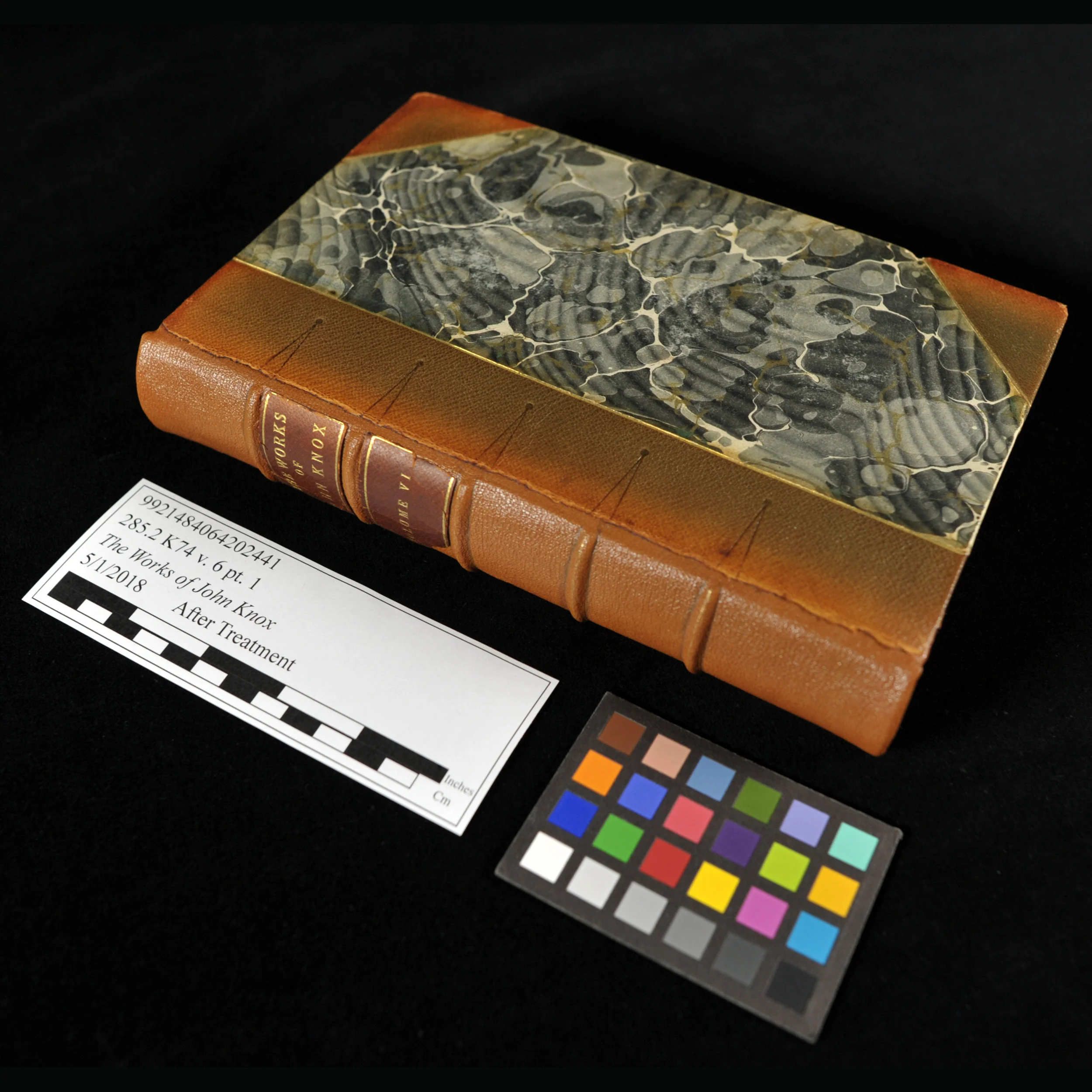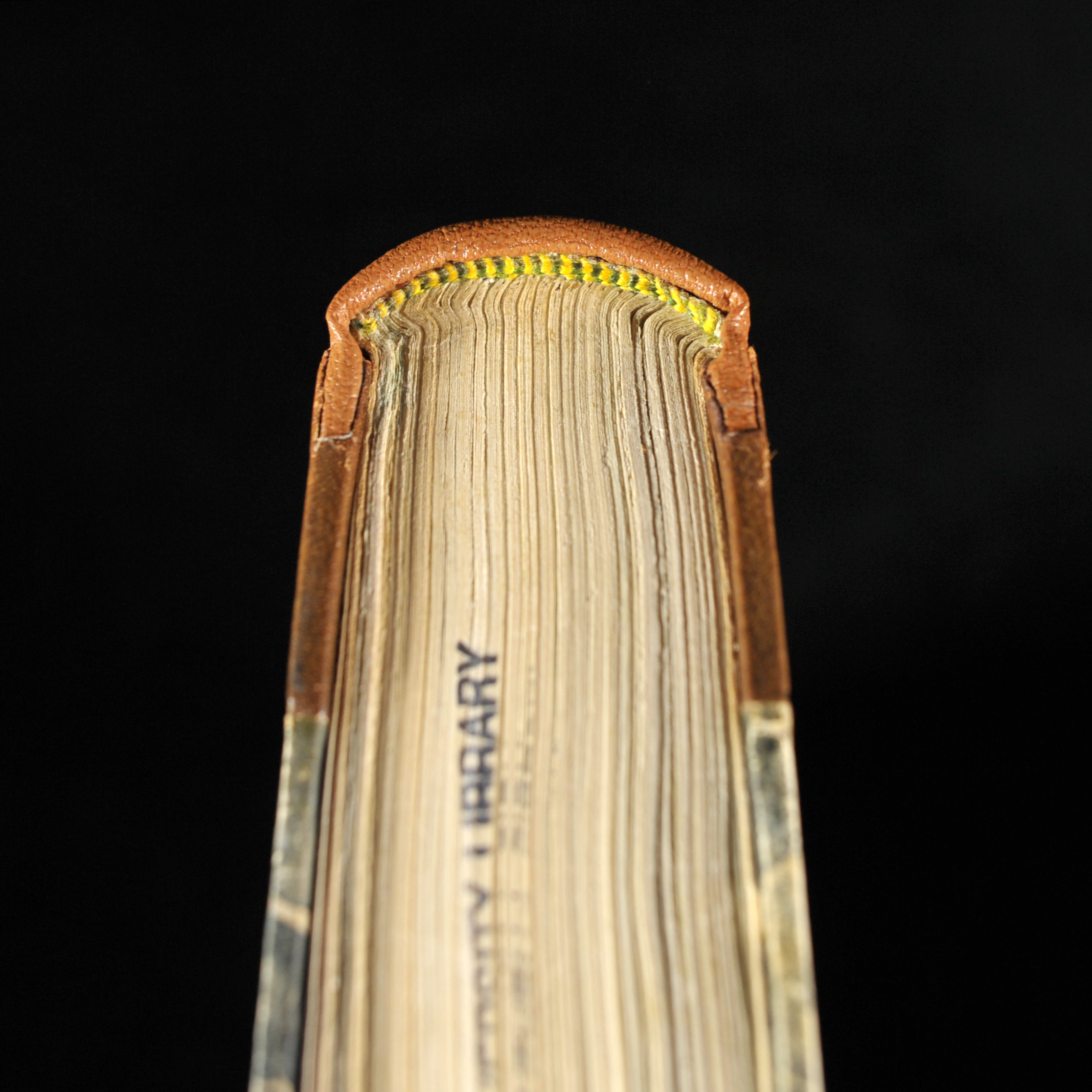This French book of hours was re-bound in the nineteenth century, but that binding had not stood the test of time. Both boards had detached, and the sewing was breaking in several locations. The nineteenth-century binder had also misplaced a bifolio, causing the text to be out of order. Several leaves were missing from the text block, as determined by both structural and textual evidence.
Following disbinding, media consolidation was performed on the more fragile areas of manuscript text. Thorough brush-testing was performed under microscope to find fragile areas. A very thin gelatin solution was applied by brush to flaking media. First, a single drop of ethanol was applied next to the flake to jump-start the capillary action. Then a drop of gelatin was applied immediately after, allowing it to move under the flake and adhere. For the more friable areas of media, gelatin was applied using an aerosol generator.
A cut-away binding model was made as the structural proposal for the re-binding. The model was made in a gothic style with conservation-grade materials, as well as with a concertina guard of Japanese paper. The model helped determine the need for the treatment binding to have a hollow spine, which would help access the gutter of the small text block.
False parchment was fashioned from acrylic-toned Okawara Japanese paper, which was sized with gelatin, pressed, and burnished. This was used as replacement material for the missing leaves in the text block.
Using the fifteenth-century sewing stations, the gatherings were sewn onto four double cords in a herringbone stitch. A Japanese paper concertina guard was incorporated into the sewing. After lining the spine, a simple back-bead endband was sewn to strengthen the text block and assist the spine opening.
Boards made of layered matboard were shaped to the slope of the shoulders, and channels were cut for the cords to pass through. After pulling the cords through their channels, they were pegged into place. The linen flanges were then adhered to the inside of the boards.
An alum-tawed calfskin was cut to size and edge-pared. The book was then covered, with no paste applied to the spine area to create a natural hollow (or “baggy back”)—this allowed the text block to keep its flexible opening action.
A cloth-covered clamshell box was fashioned to hold the newly bound manuscript. A secondary compartment holds the removed 19th-century binding materials, and a pressure lid will prevent the parchment text block from expanding.
